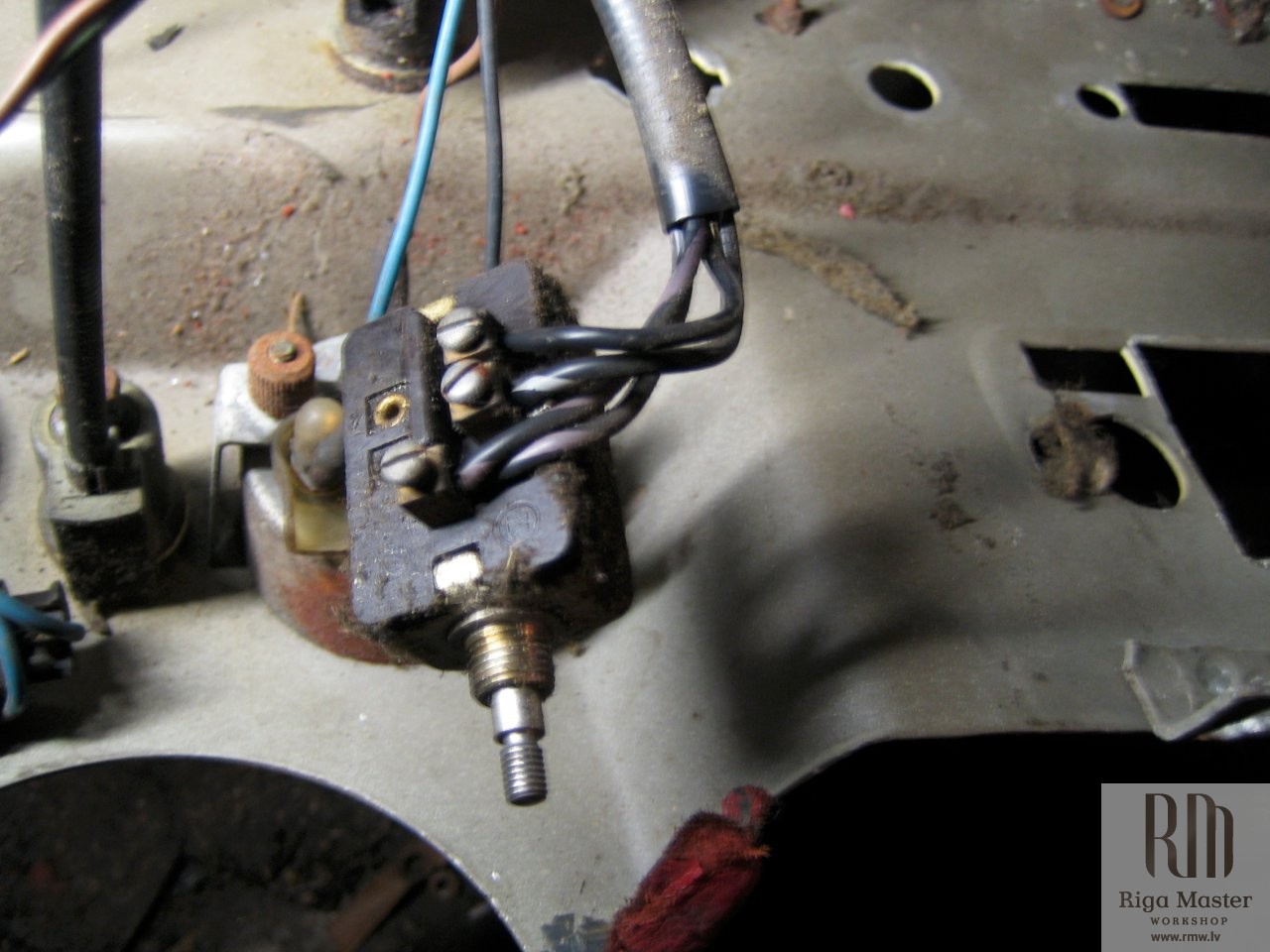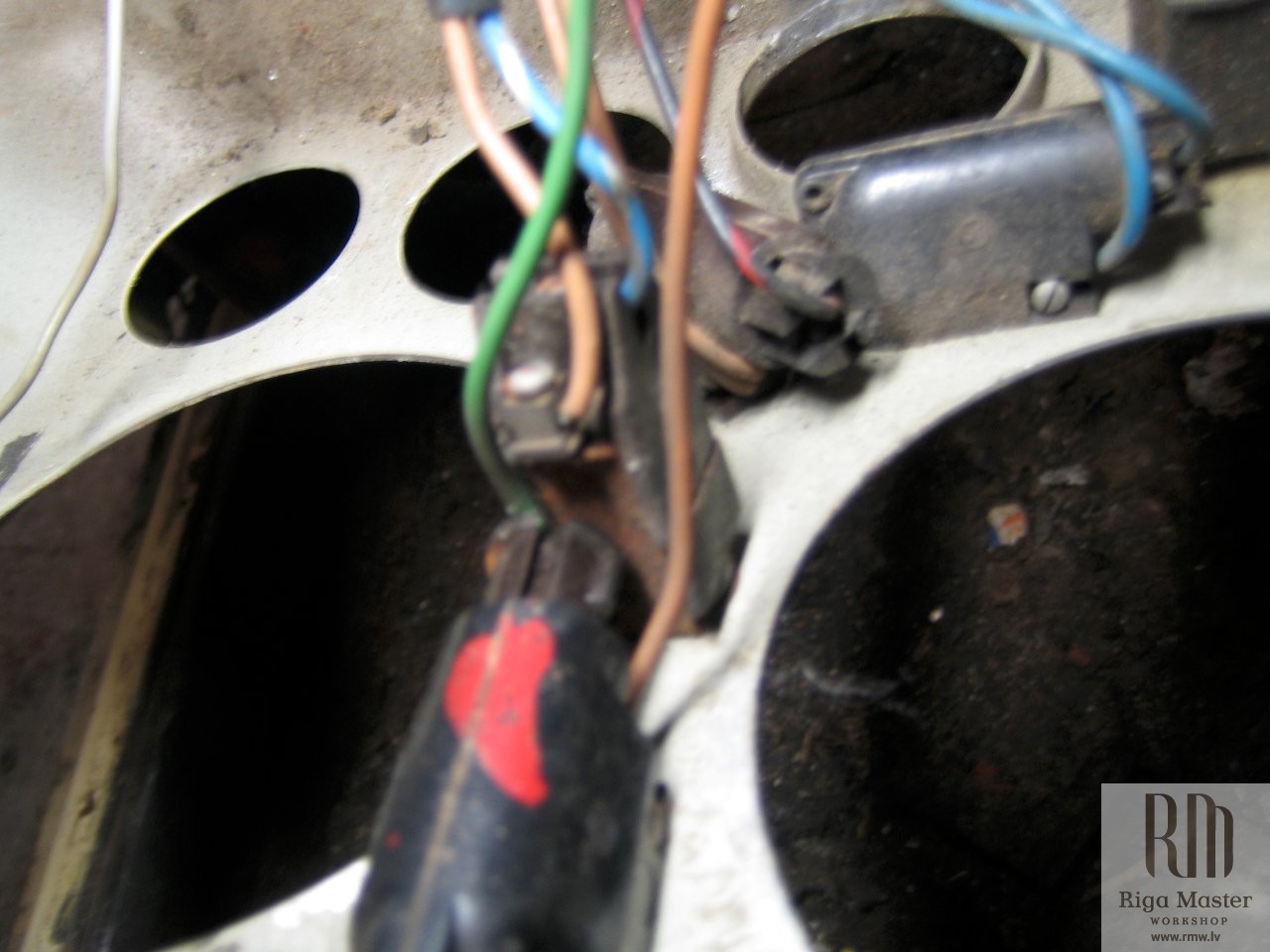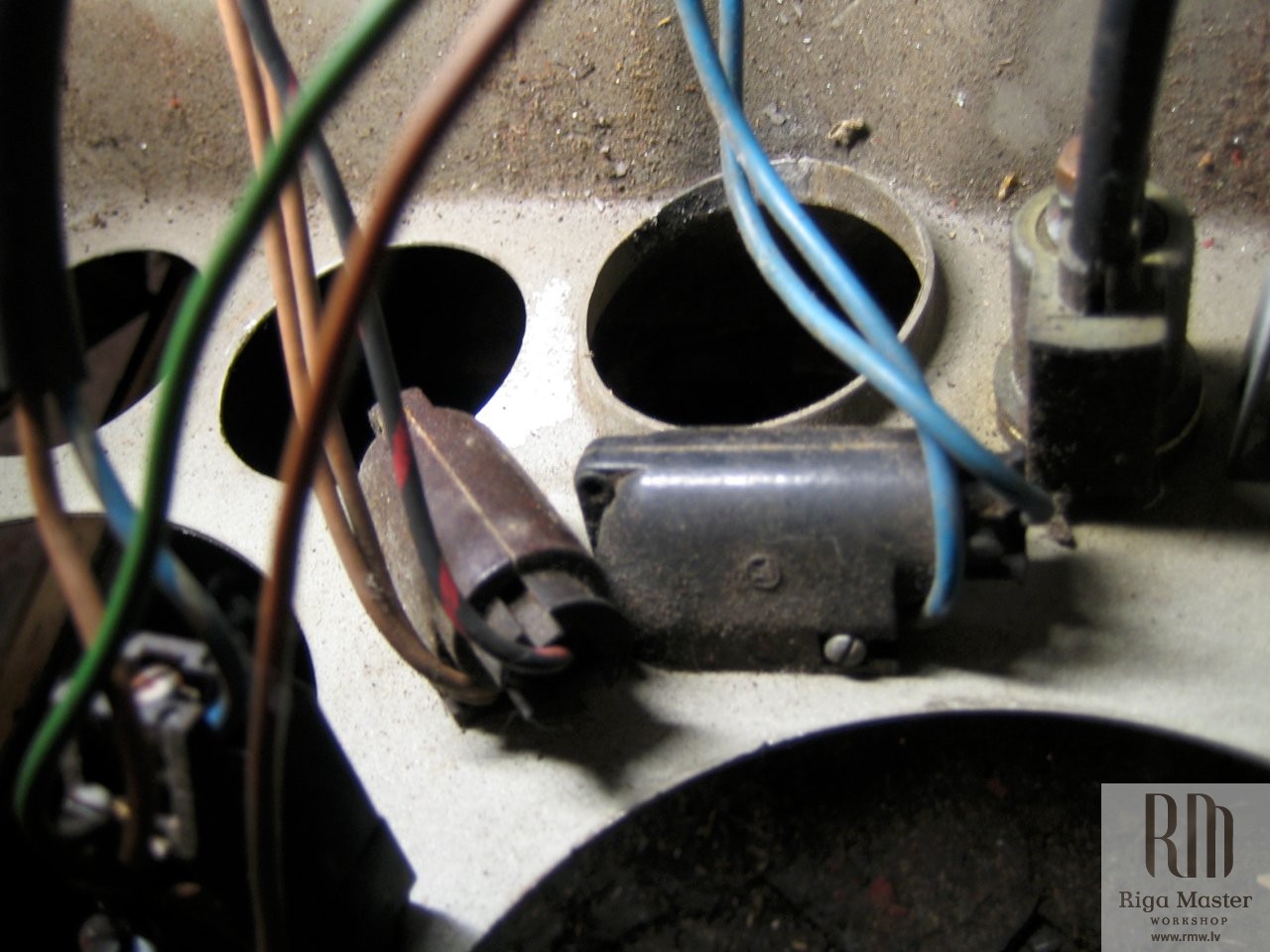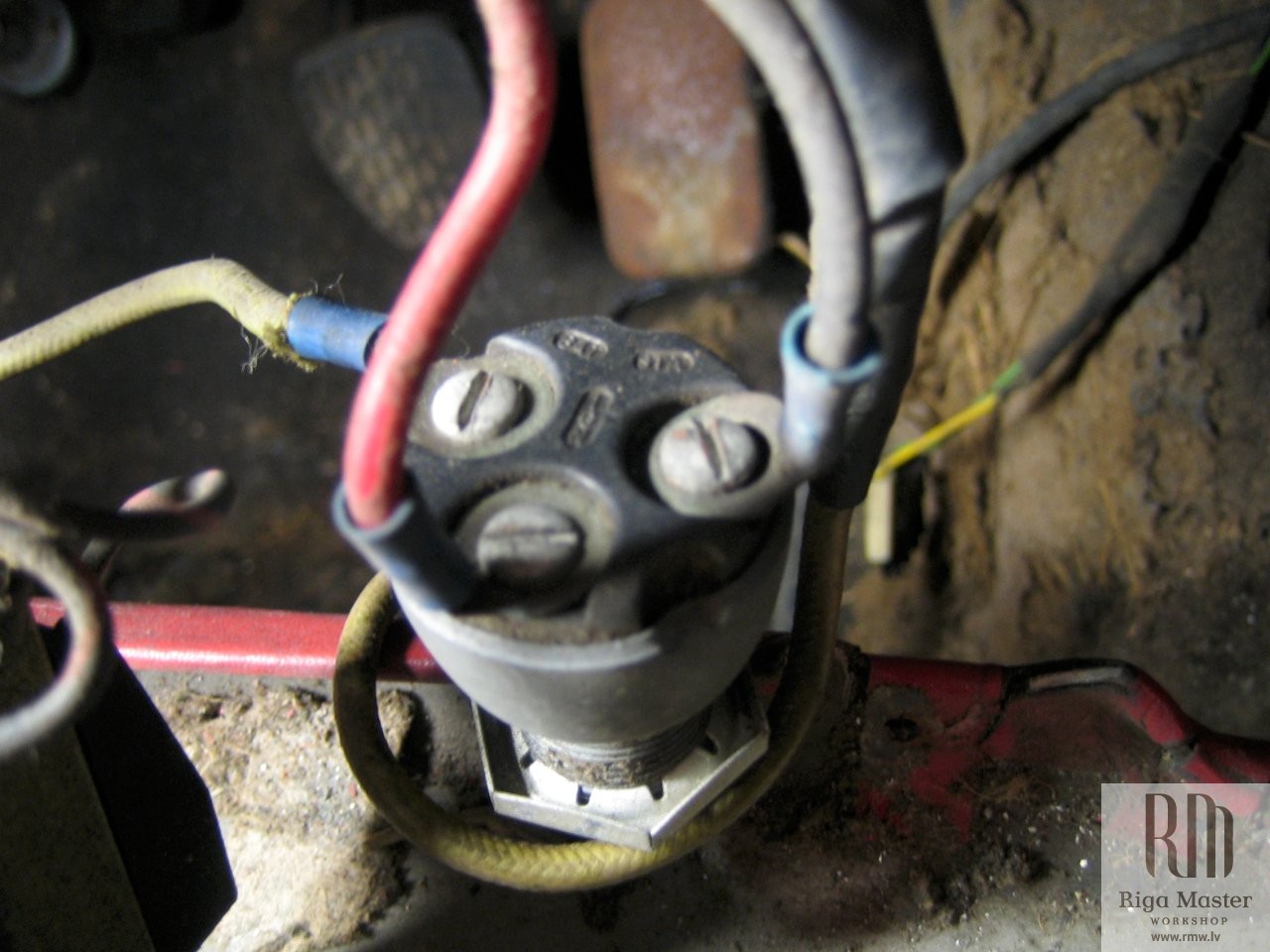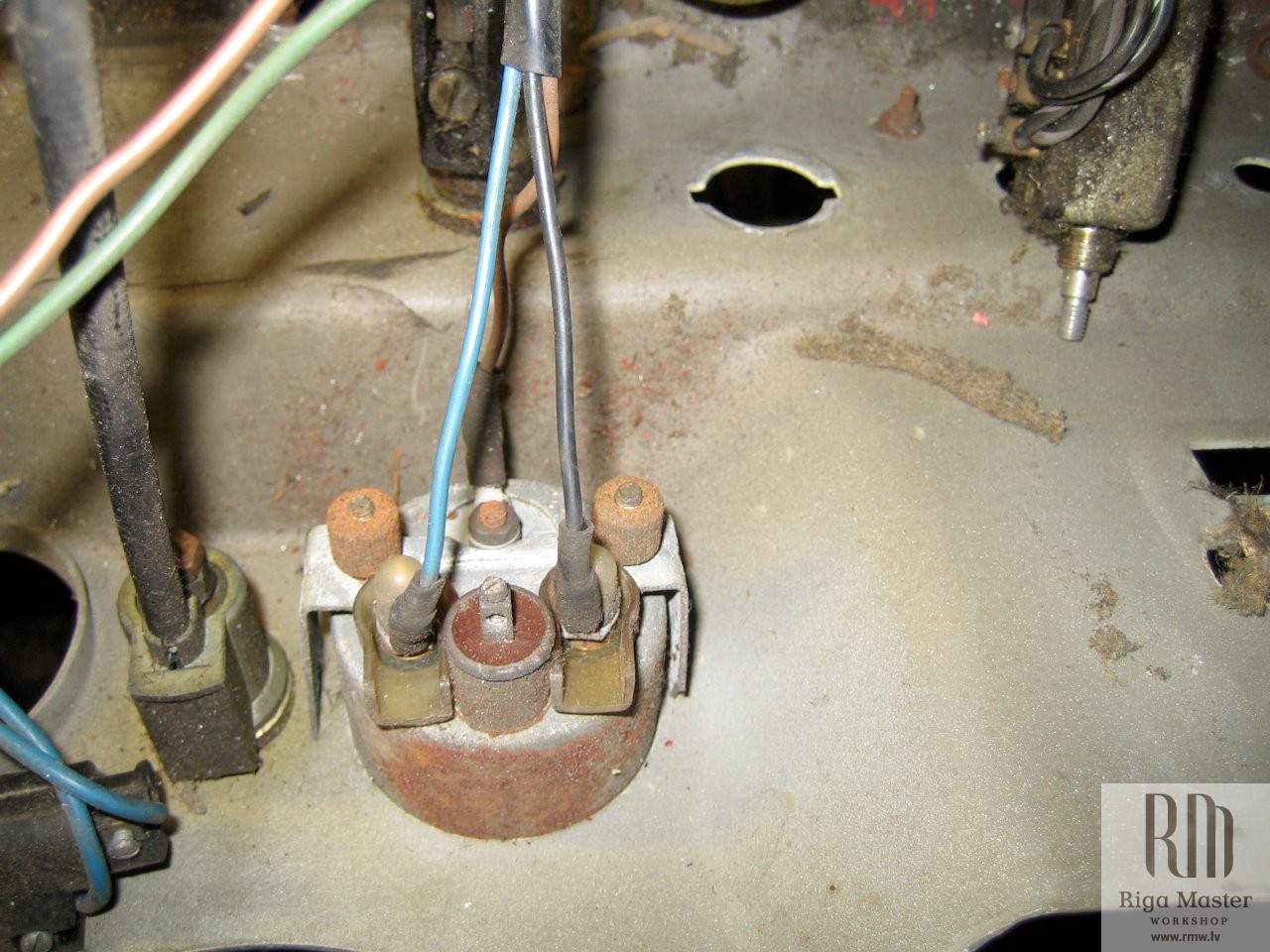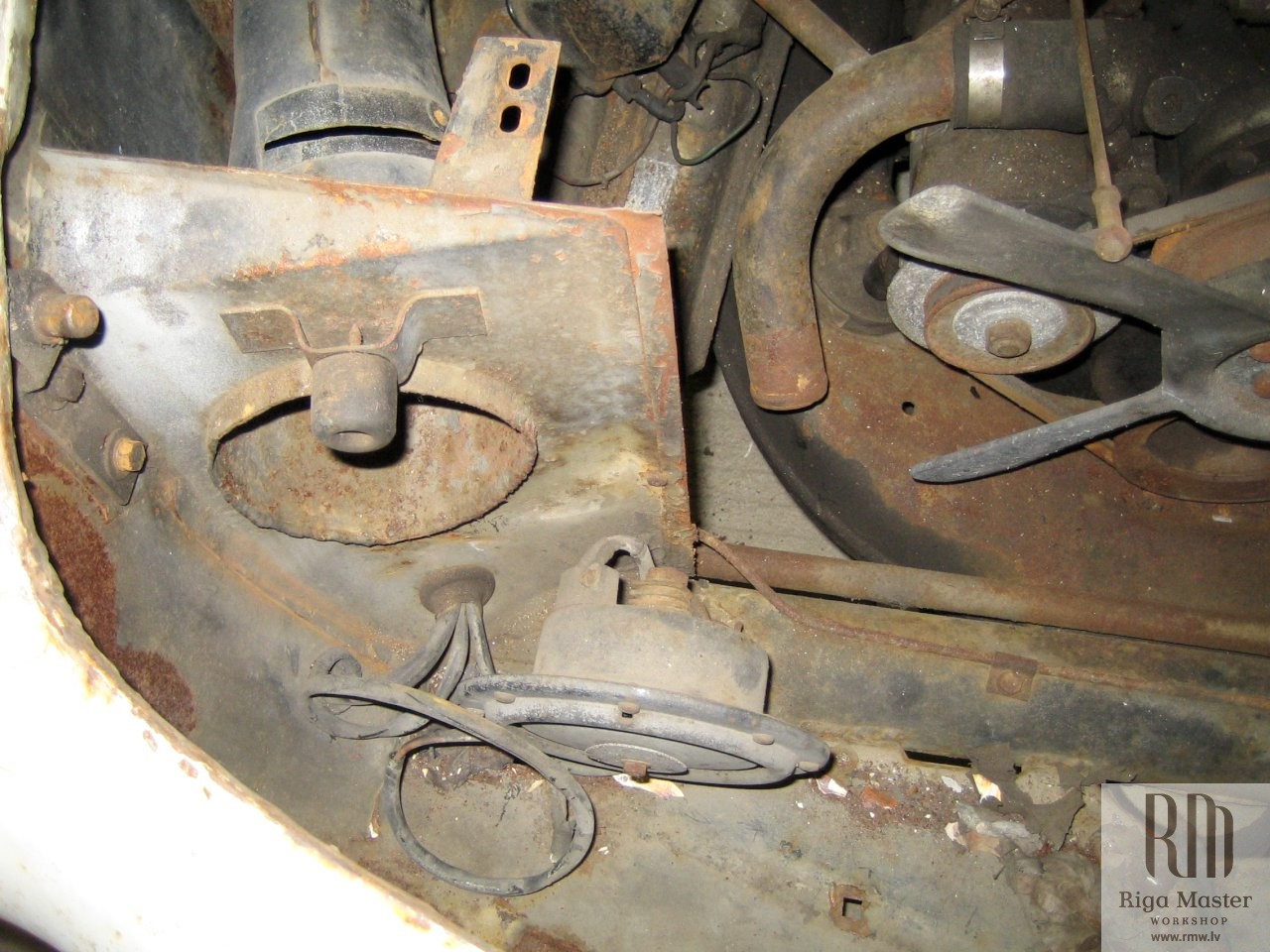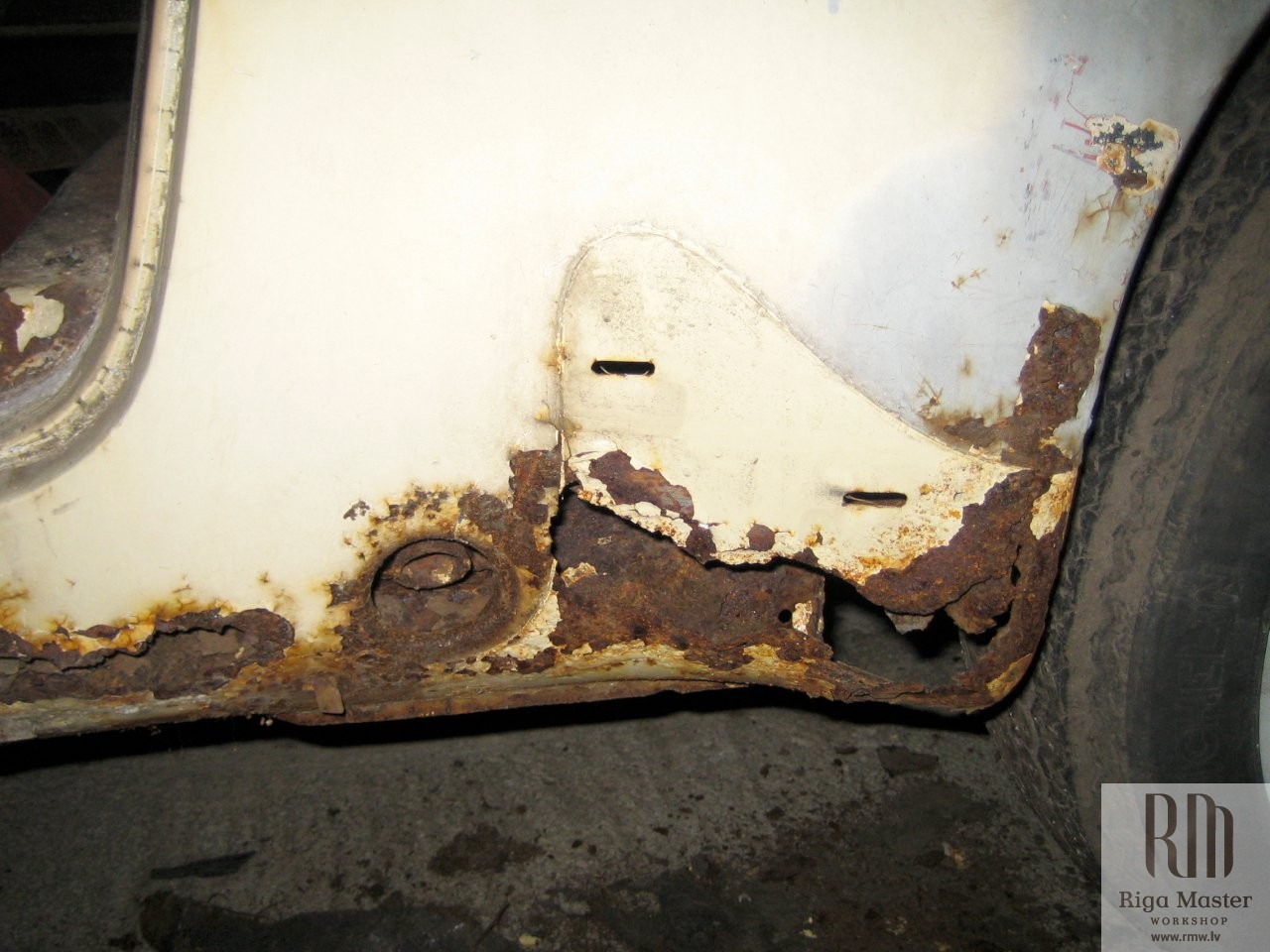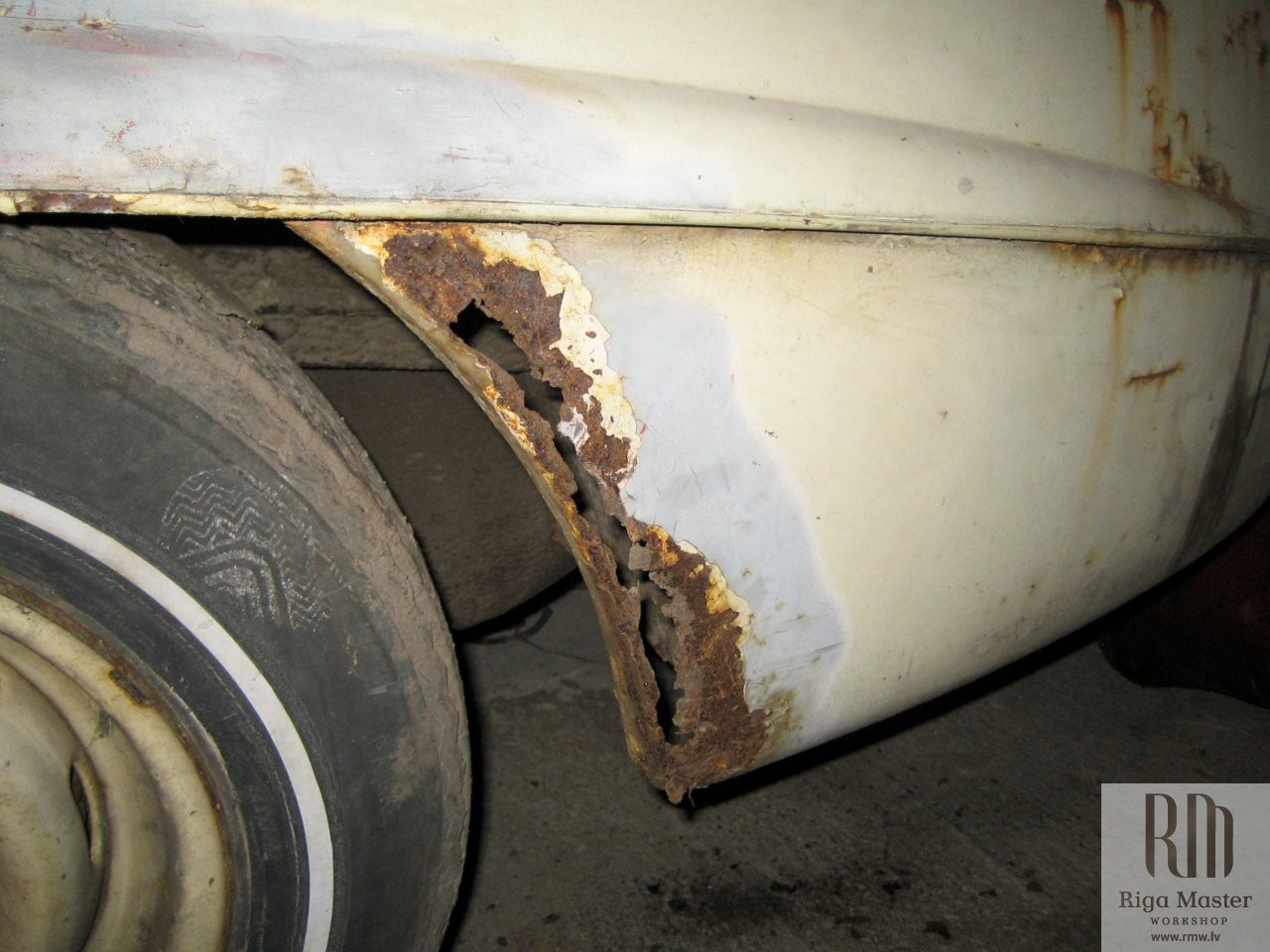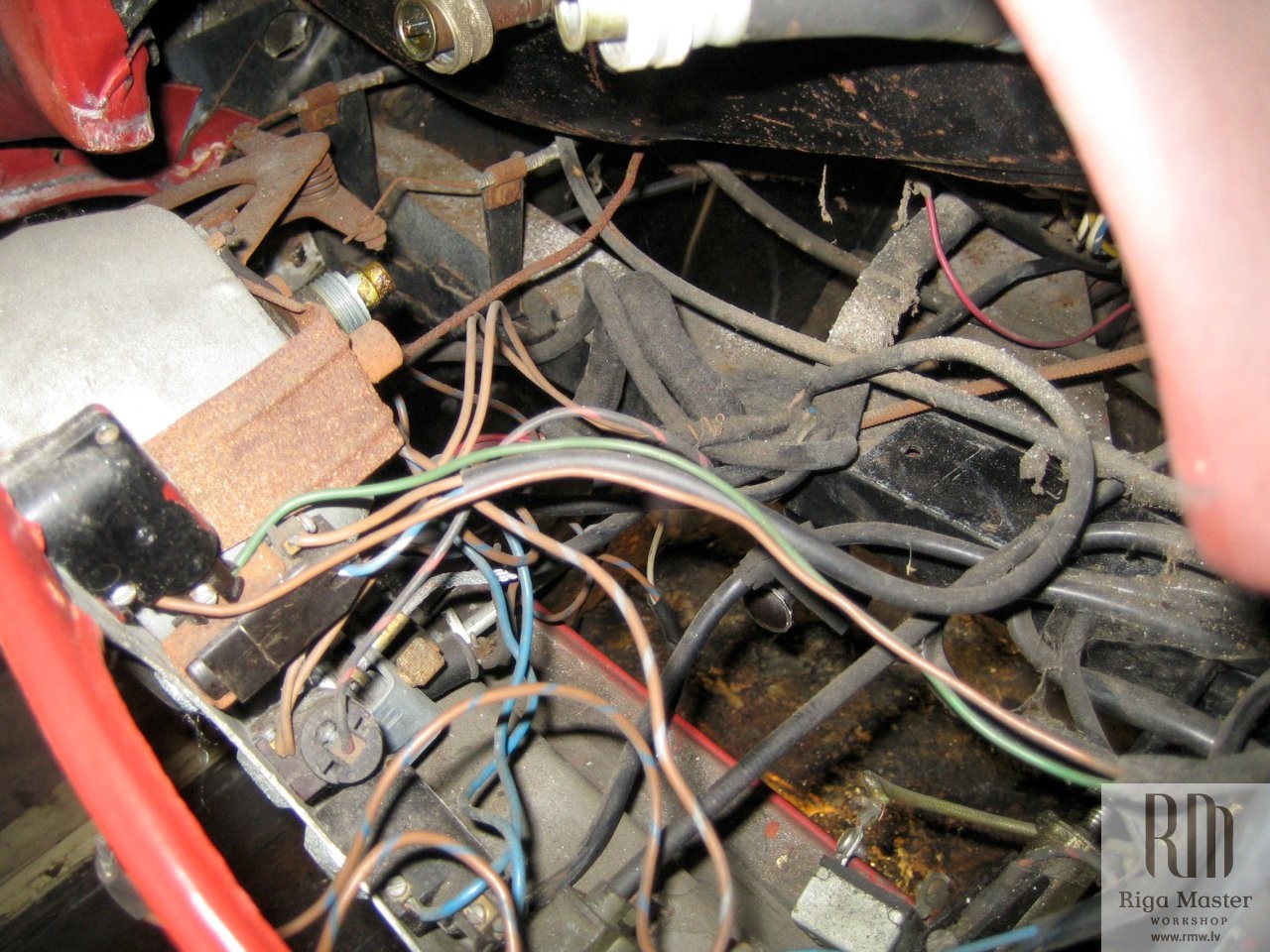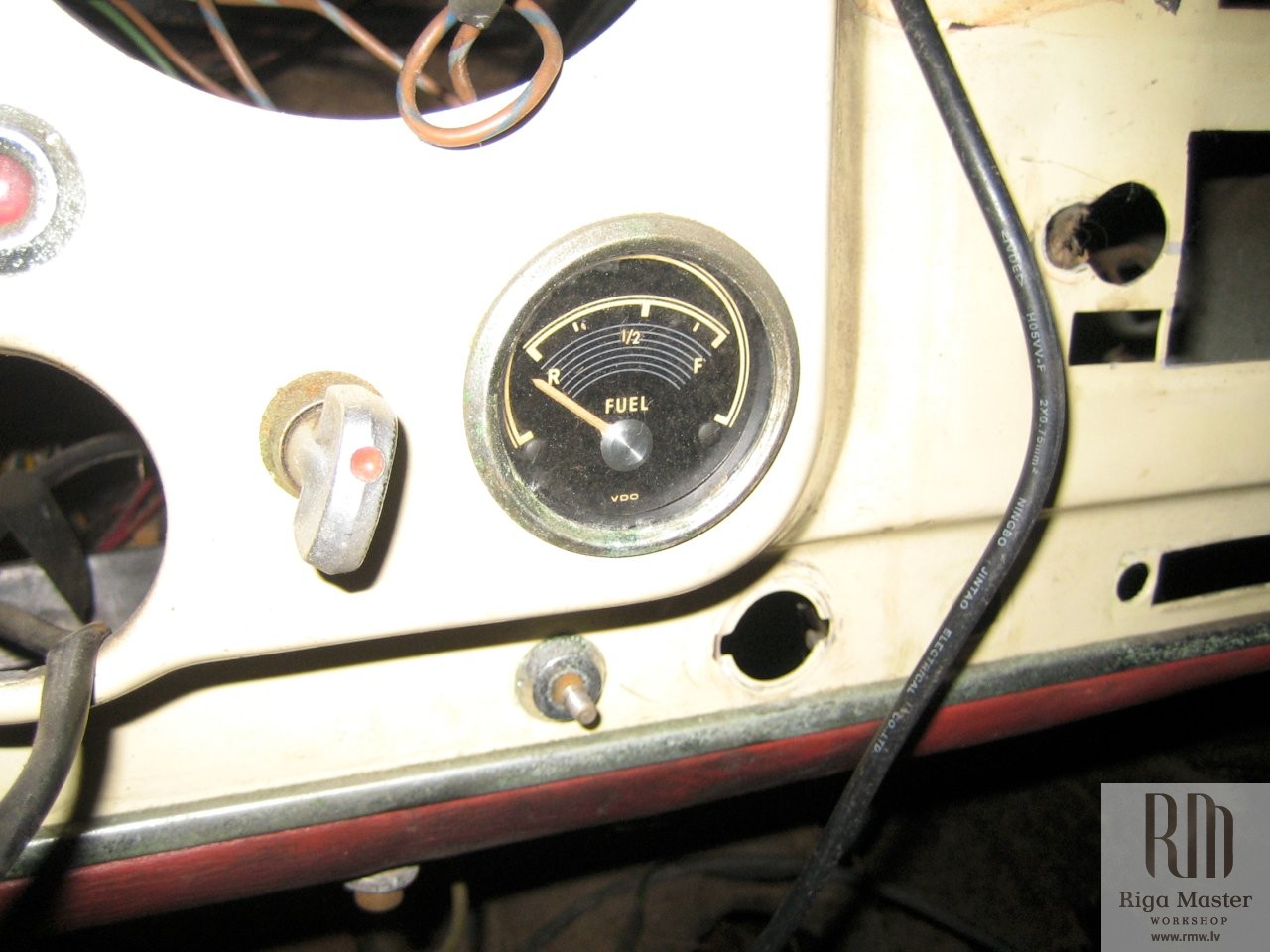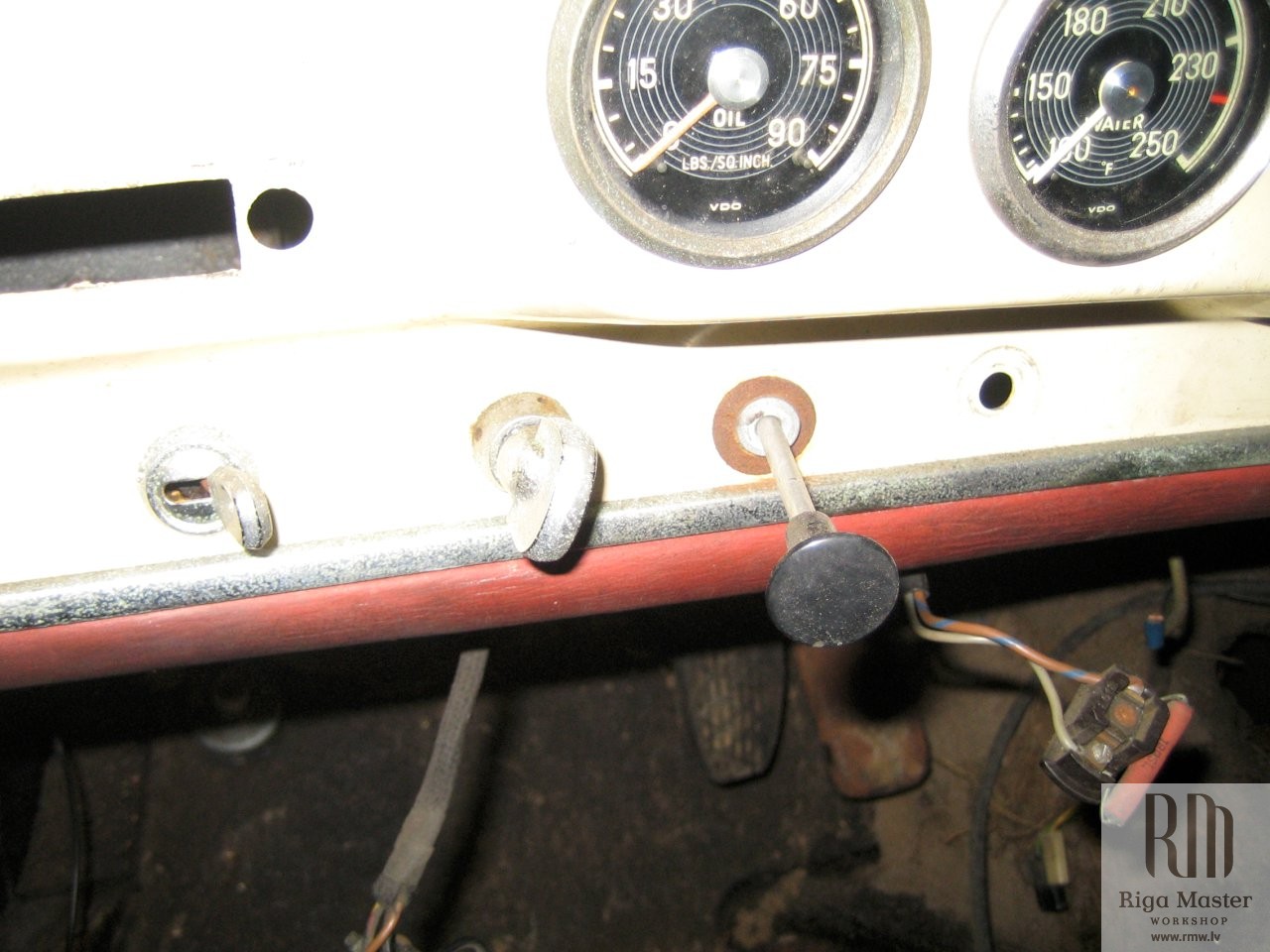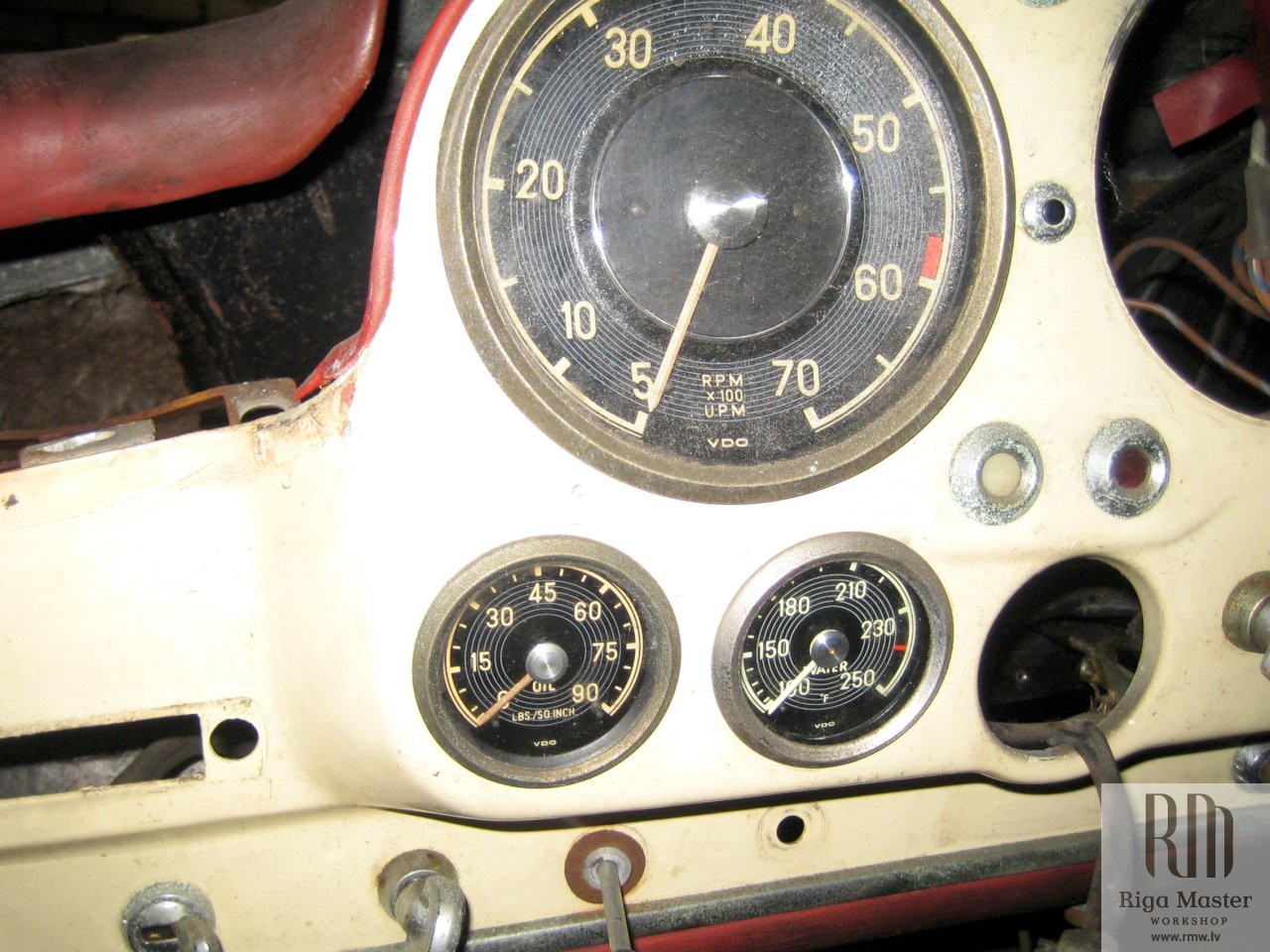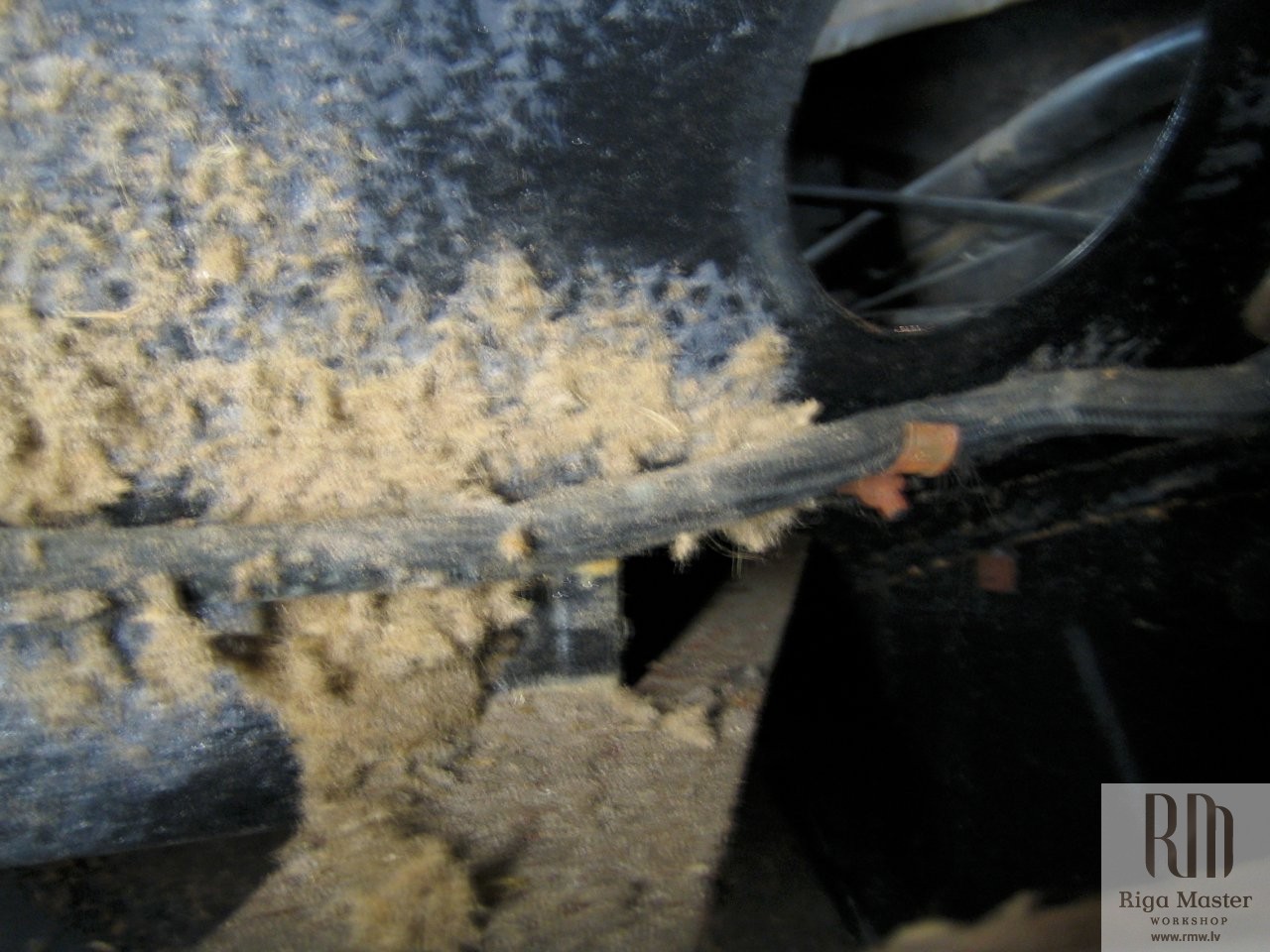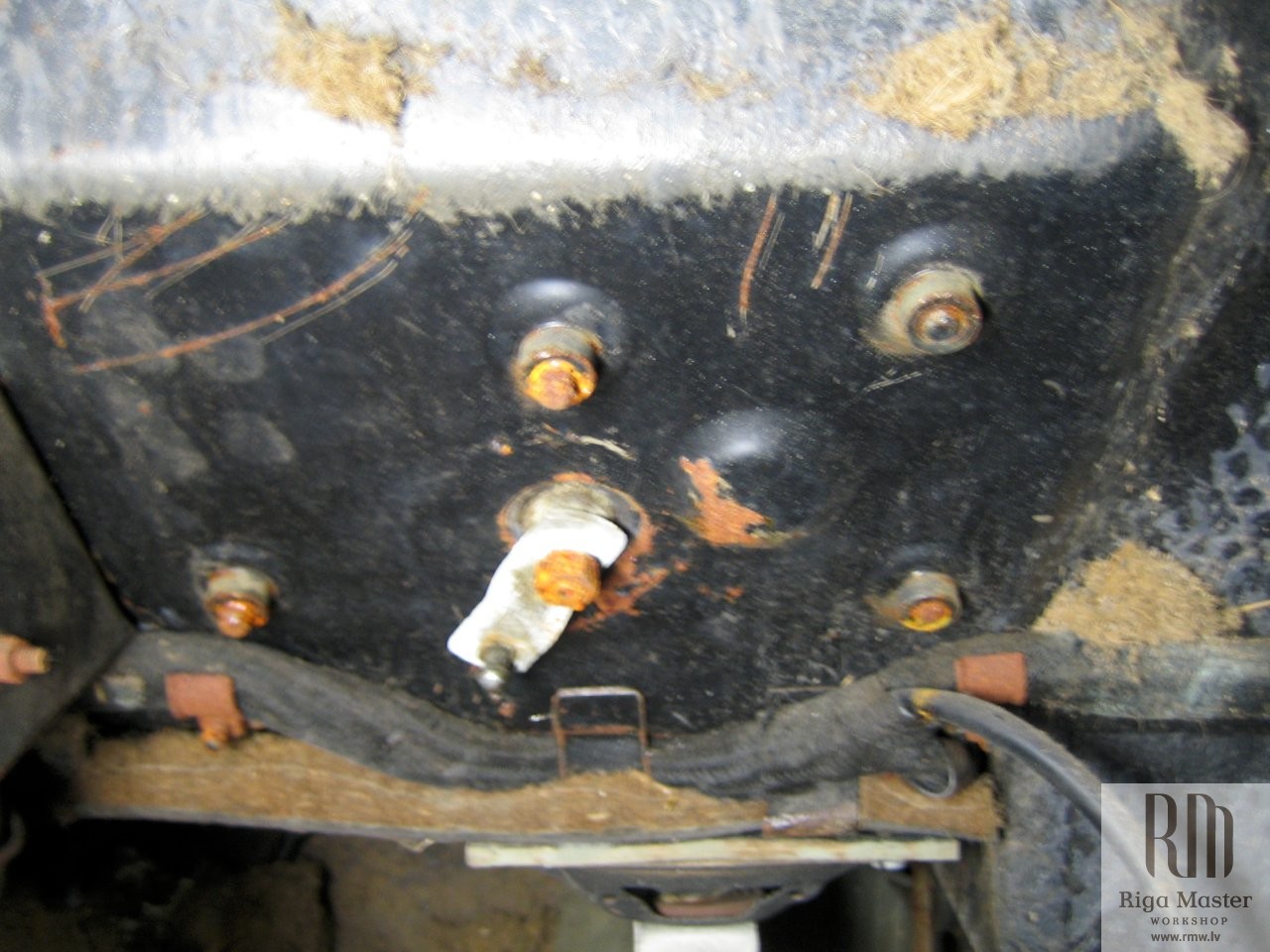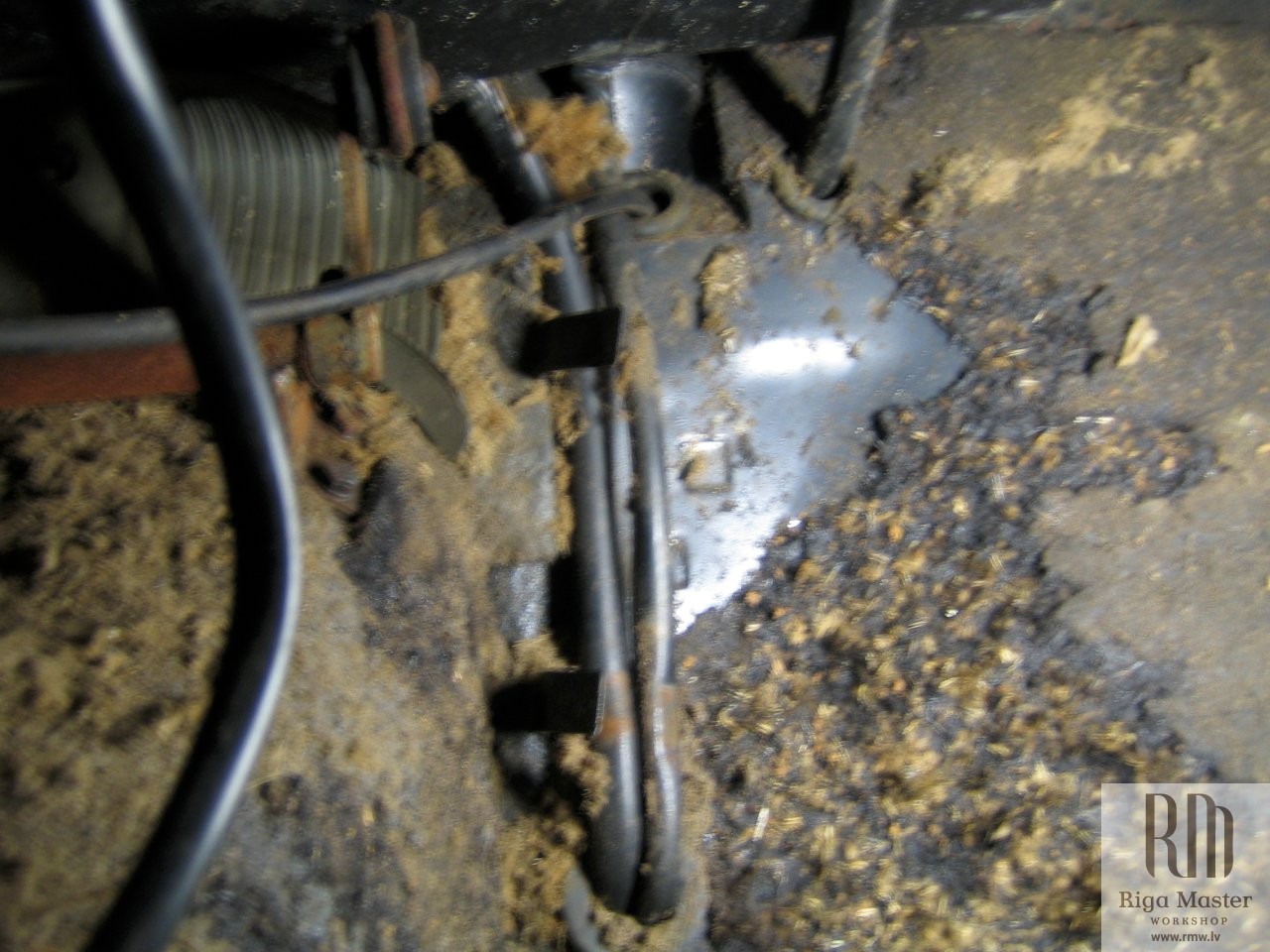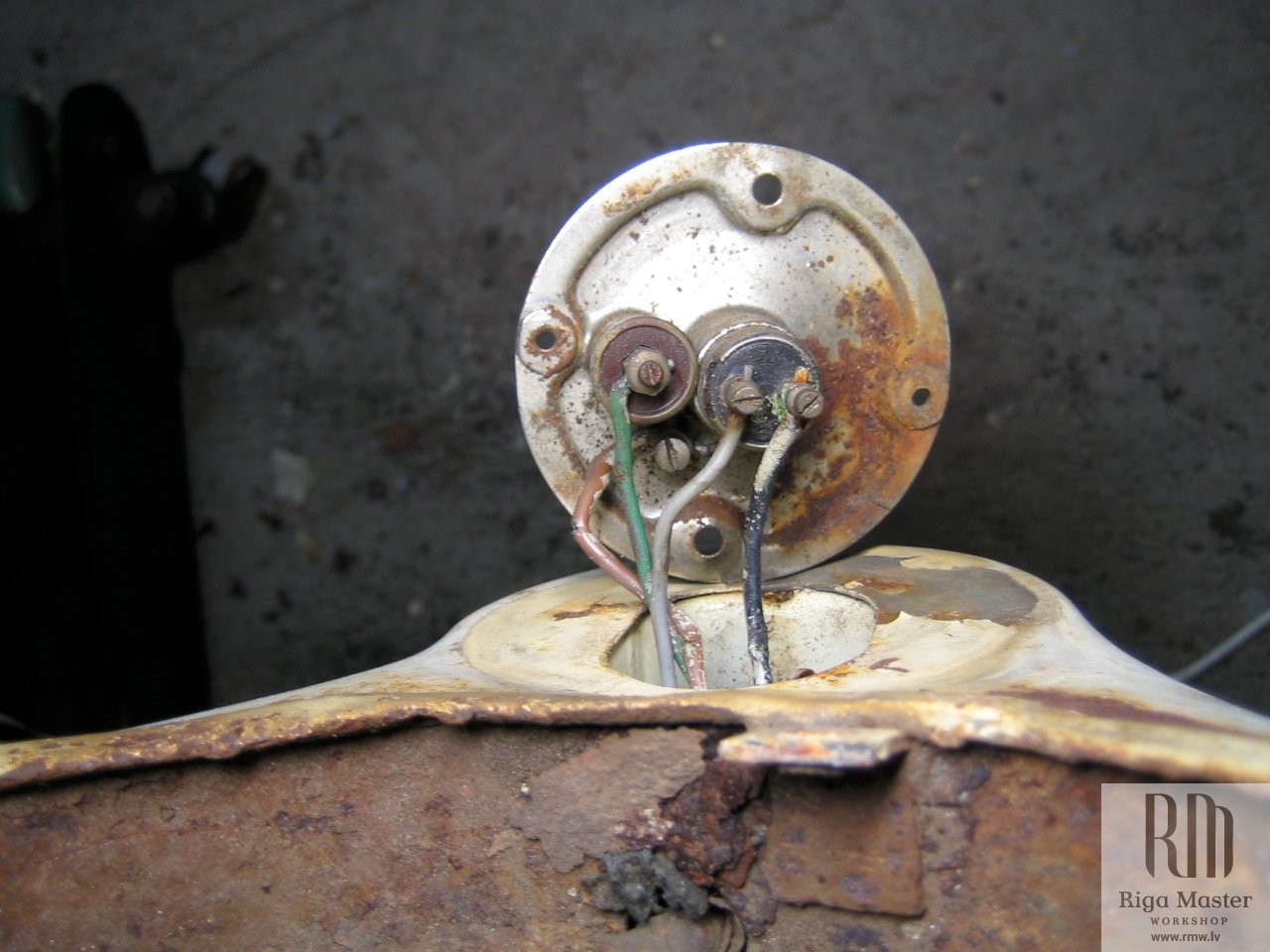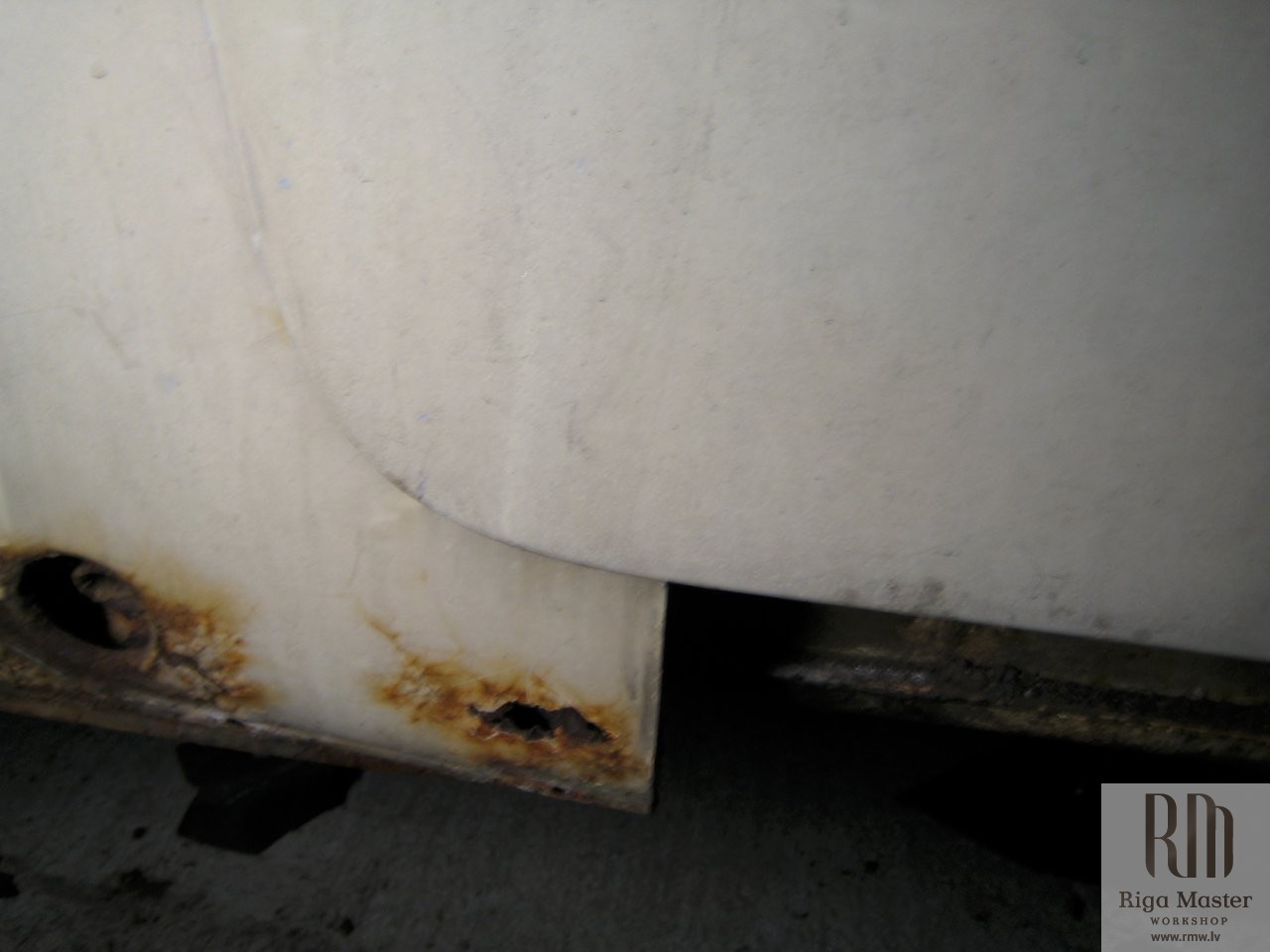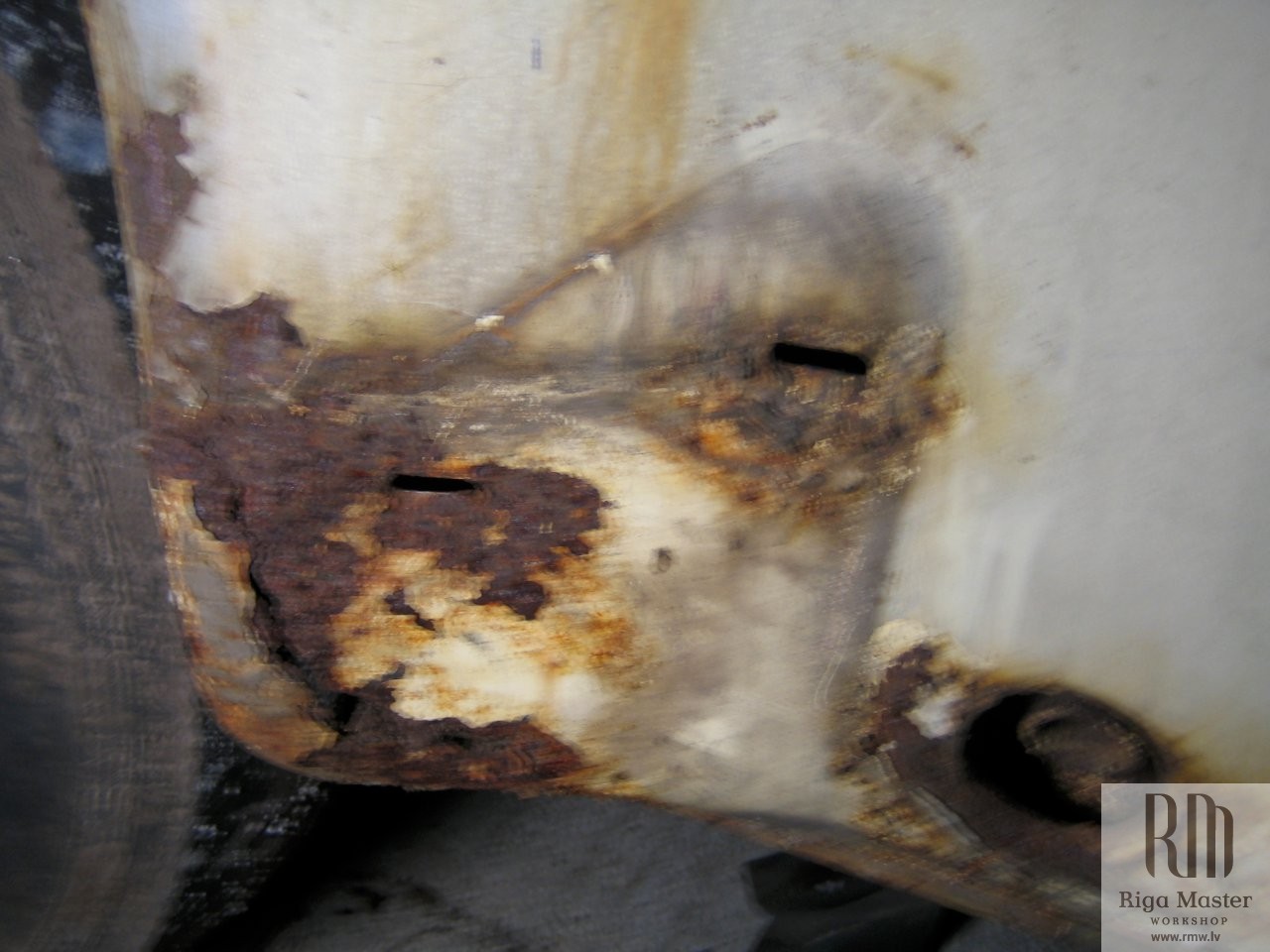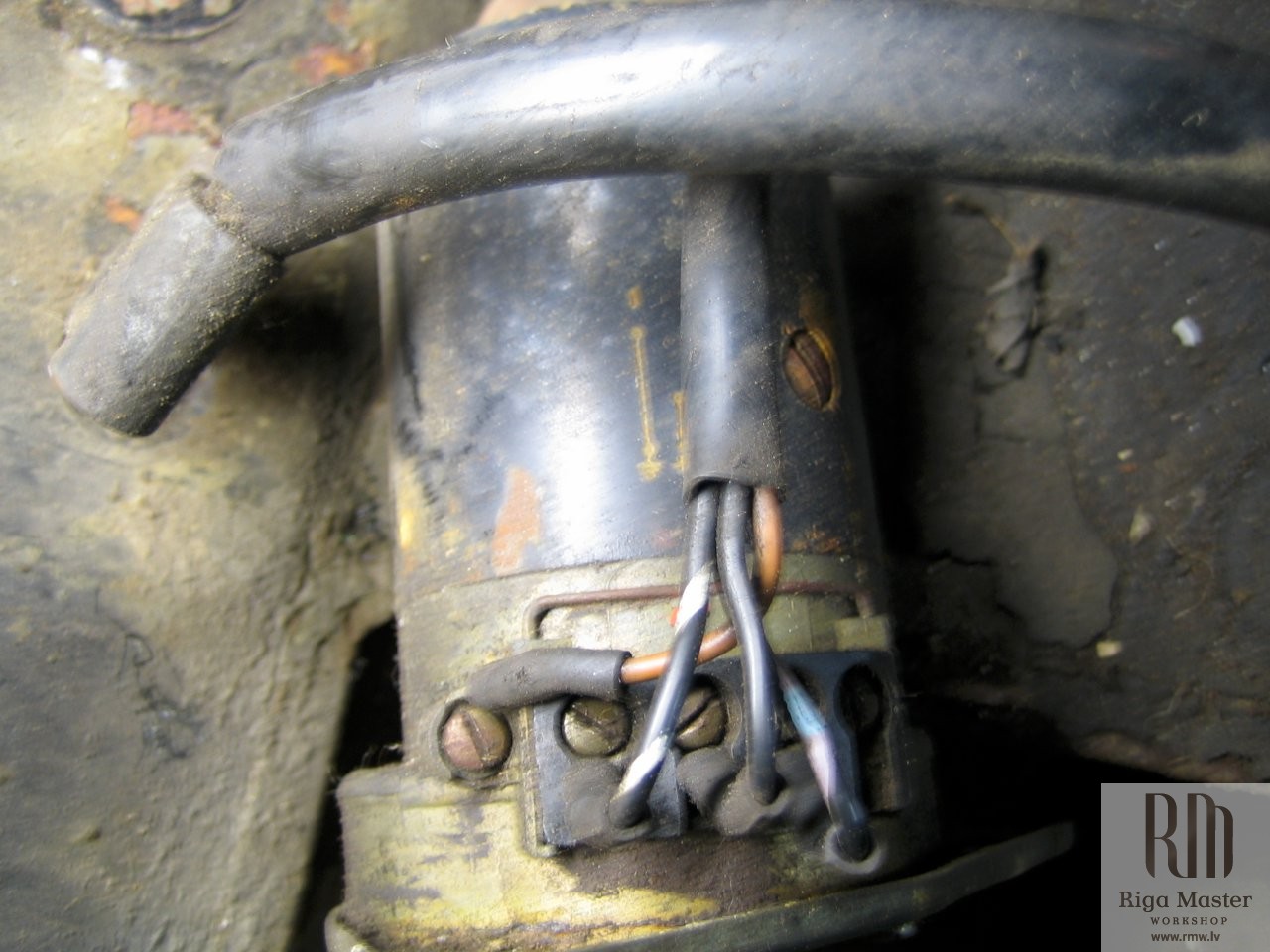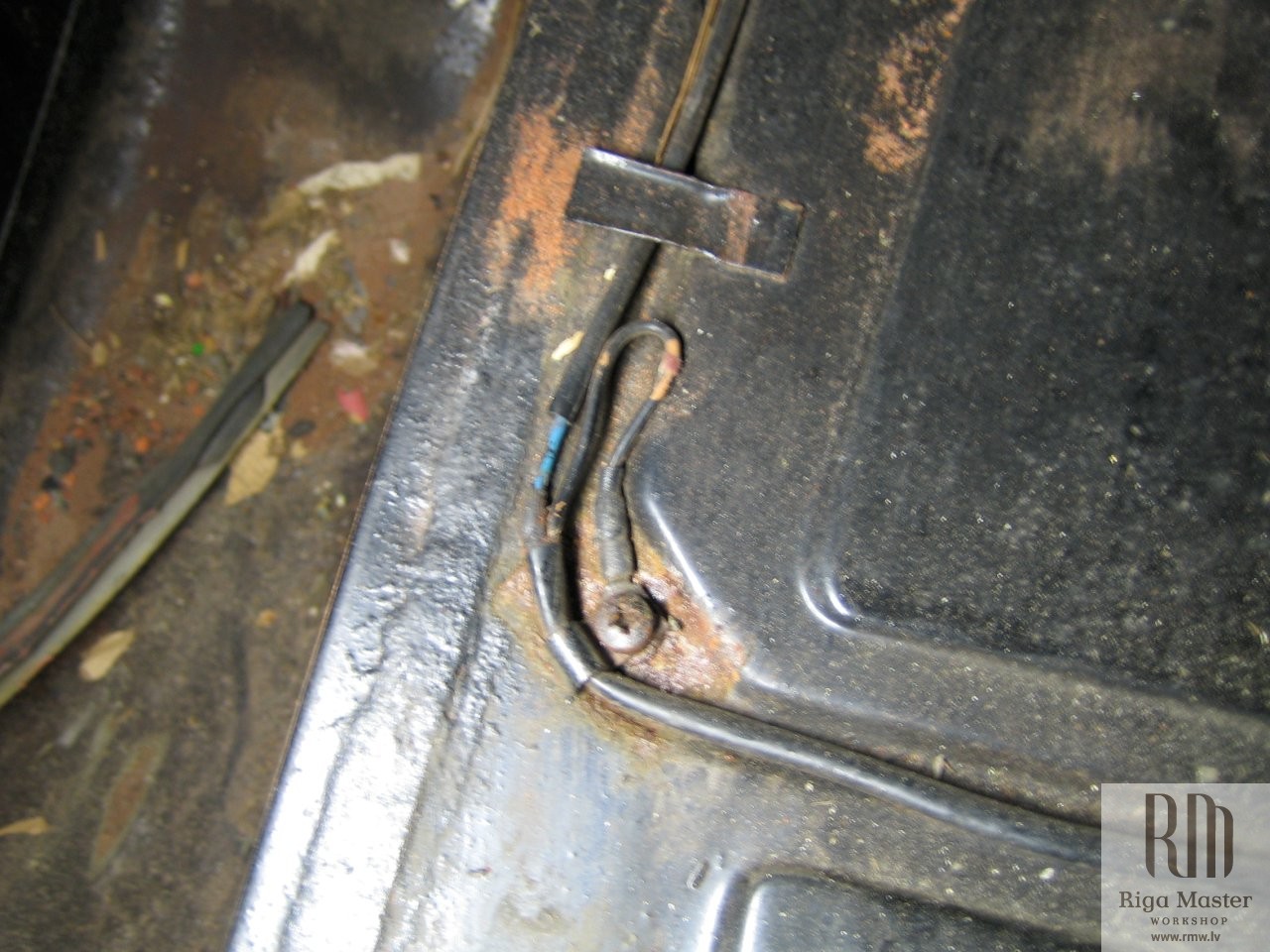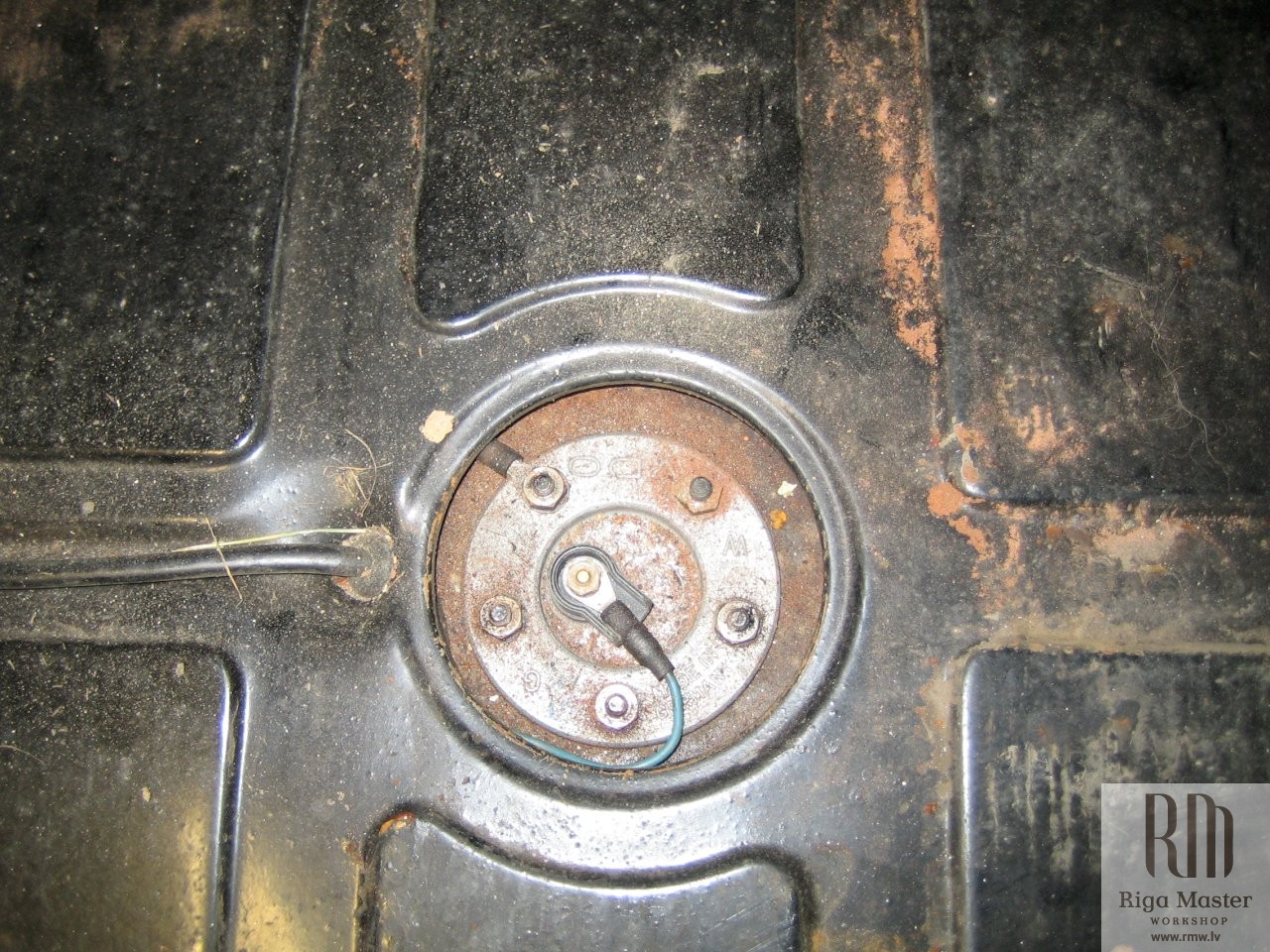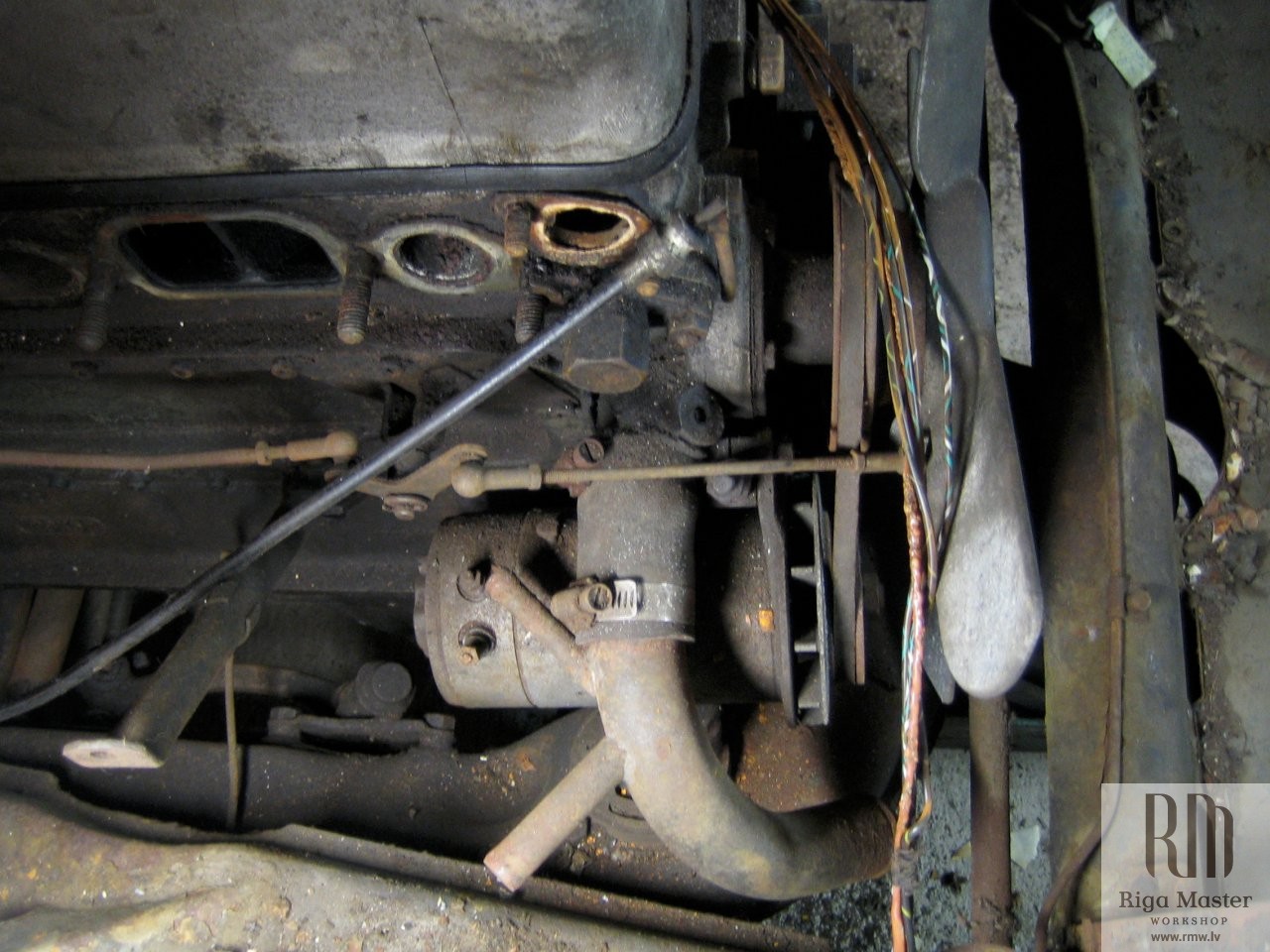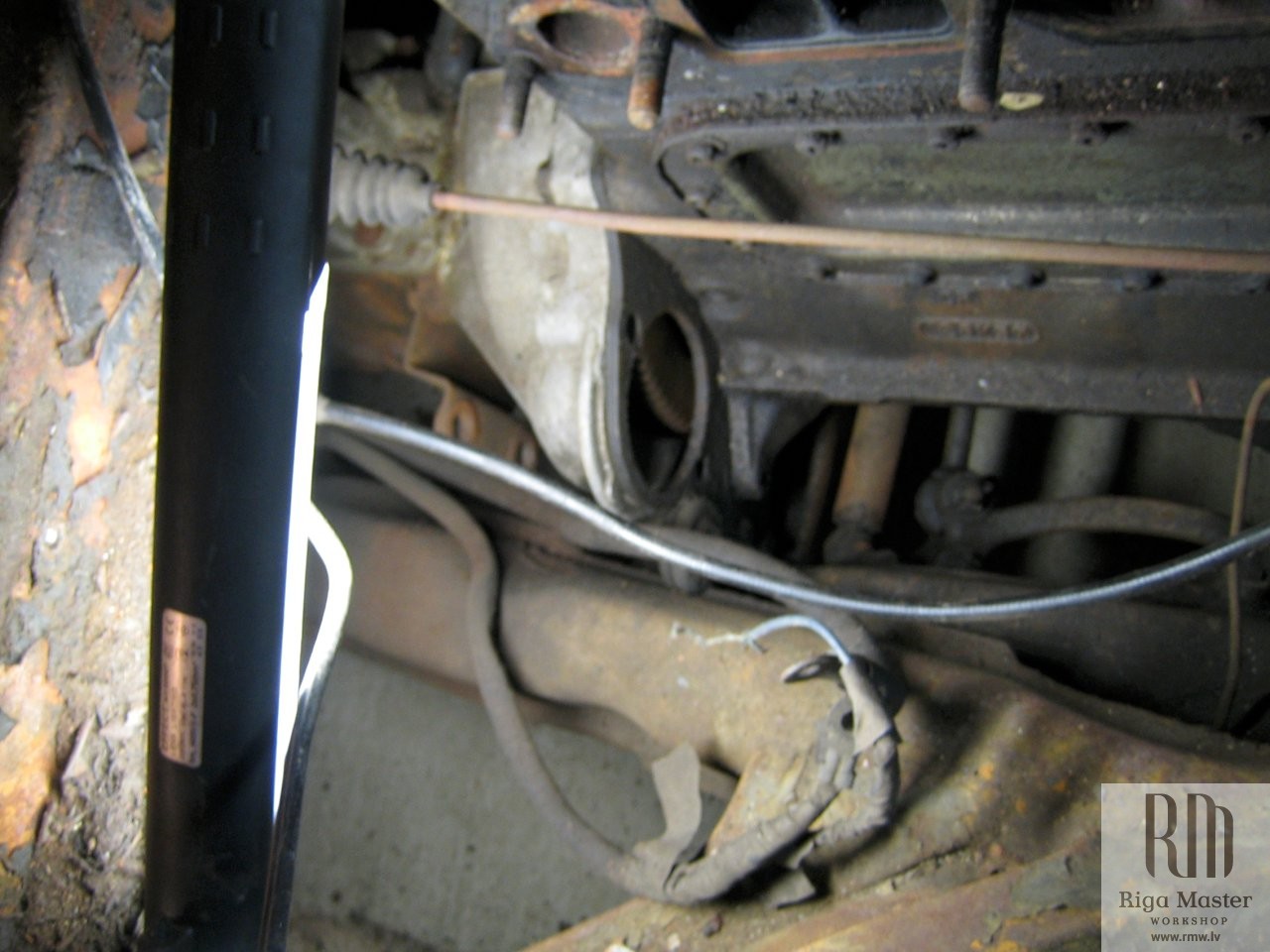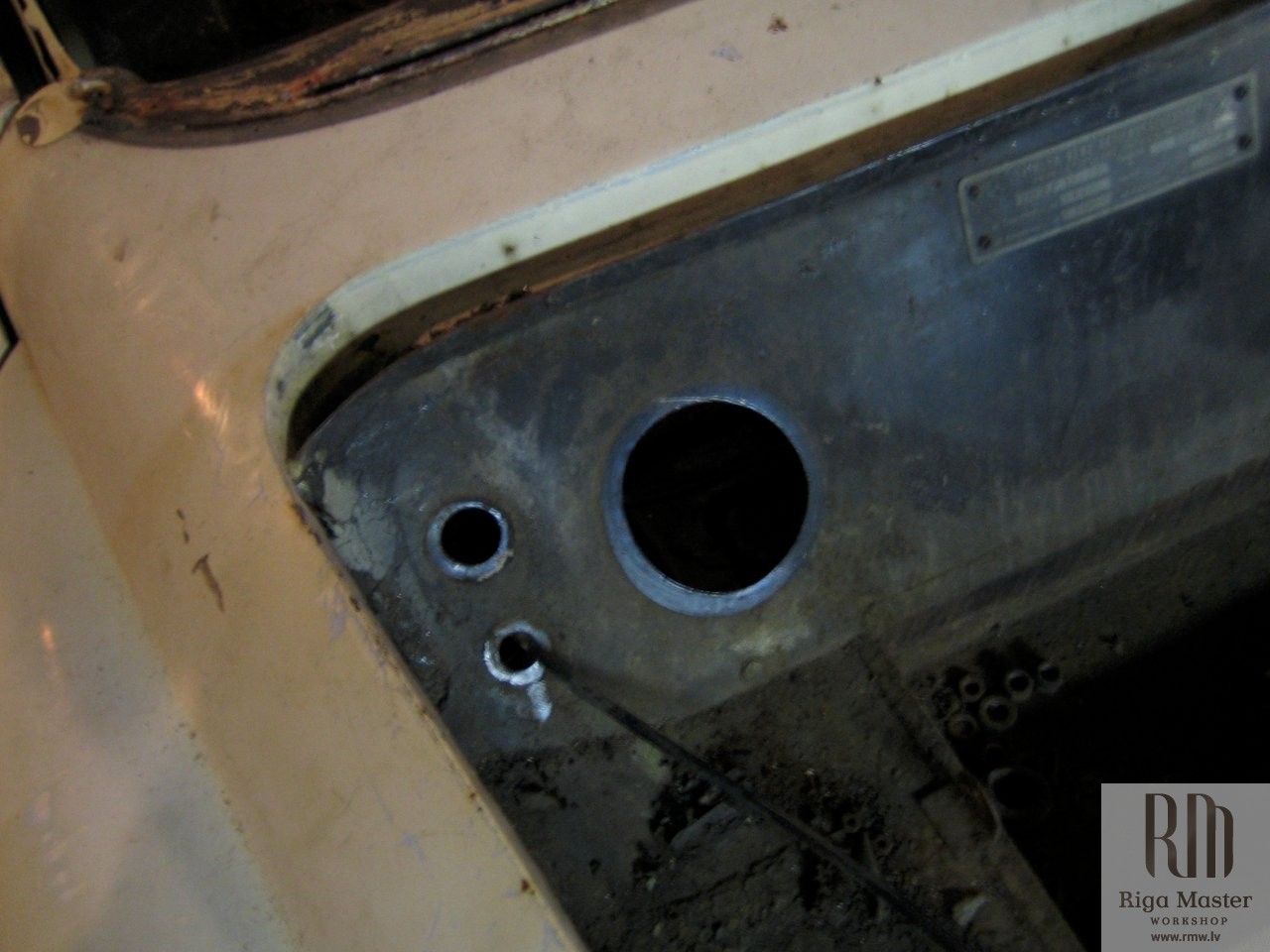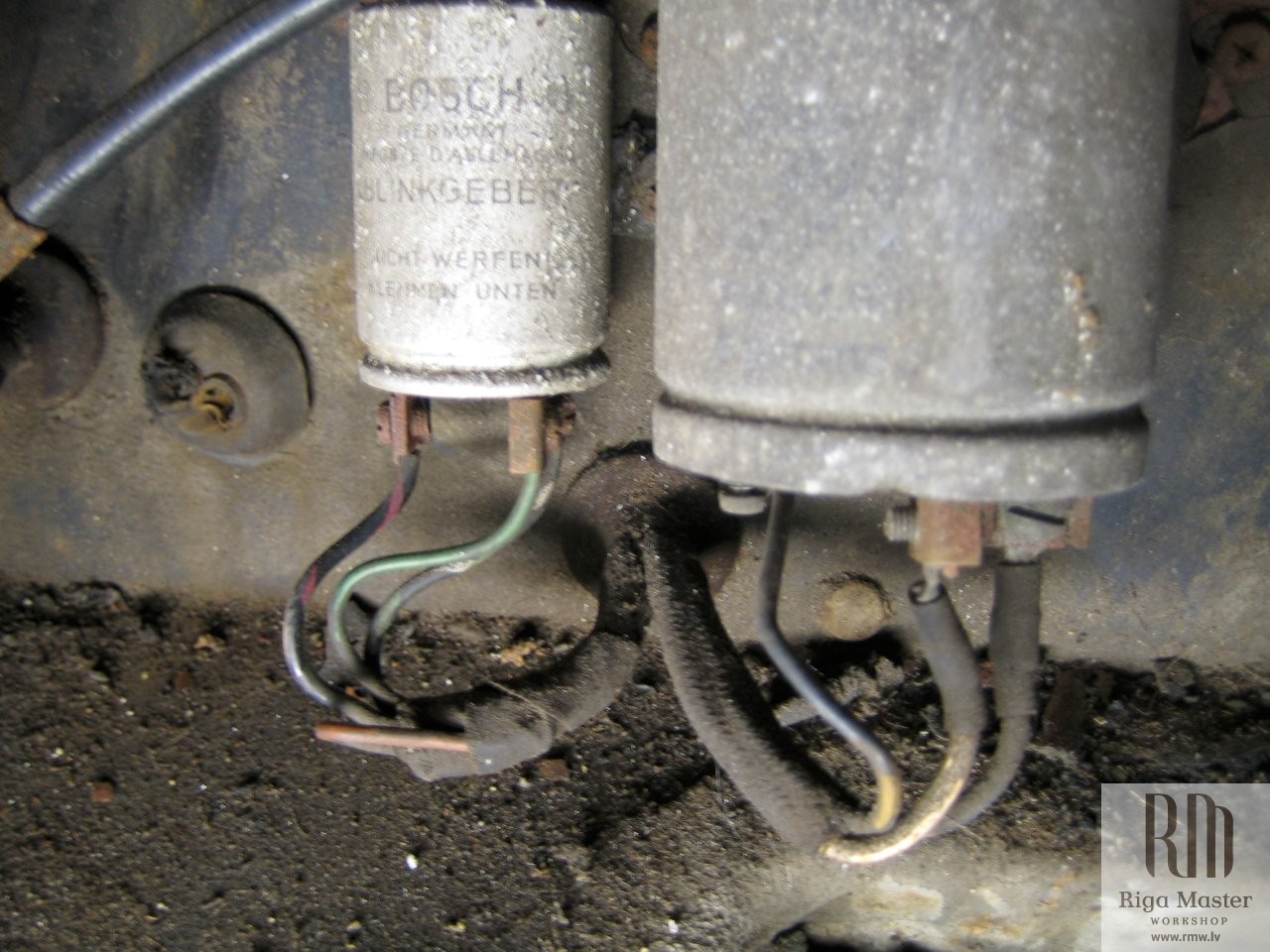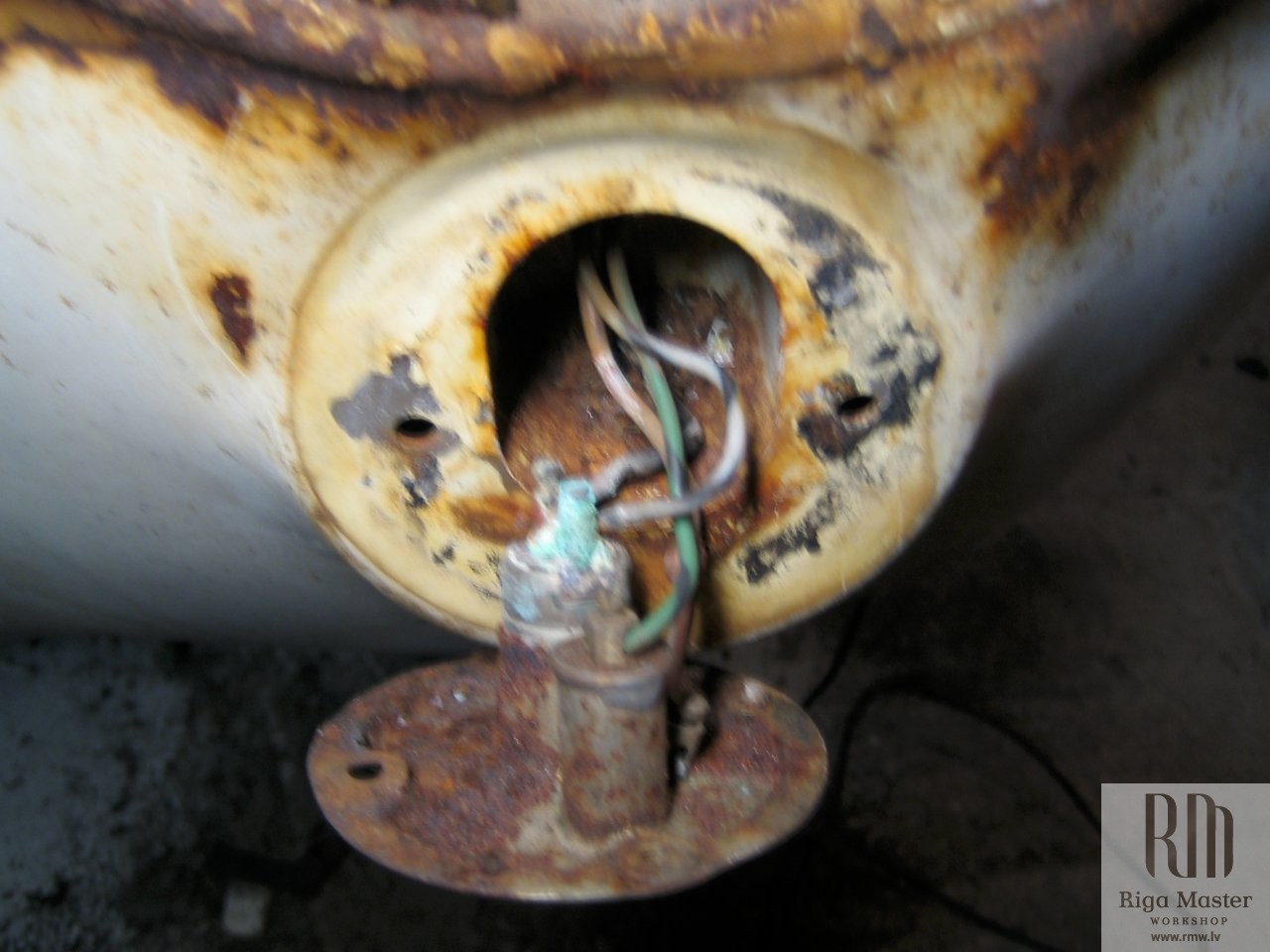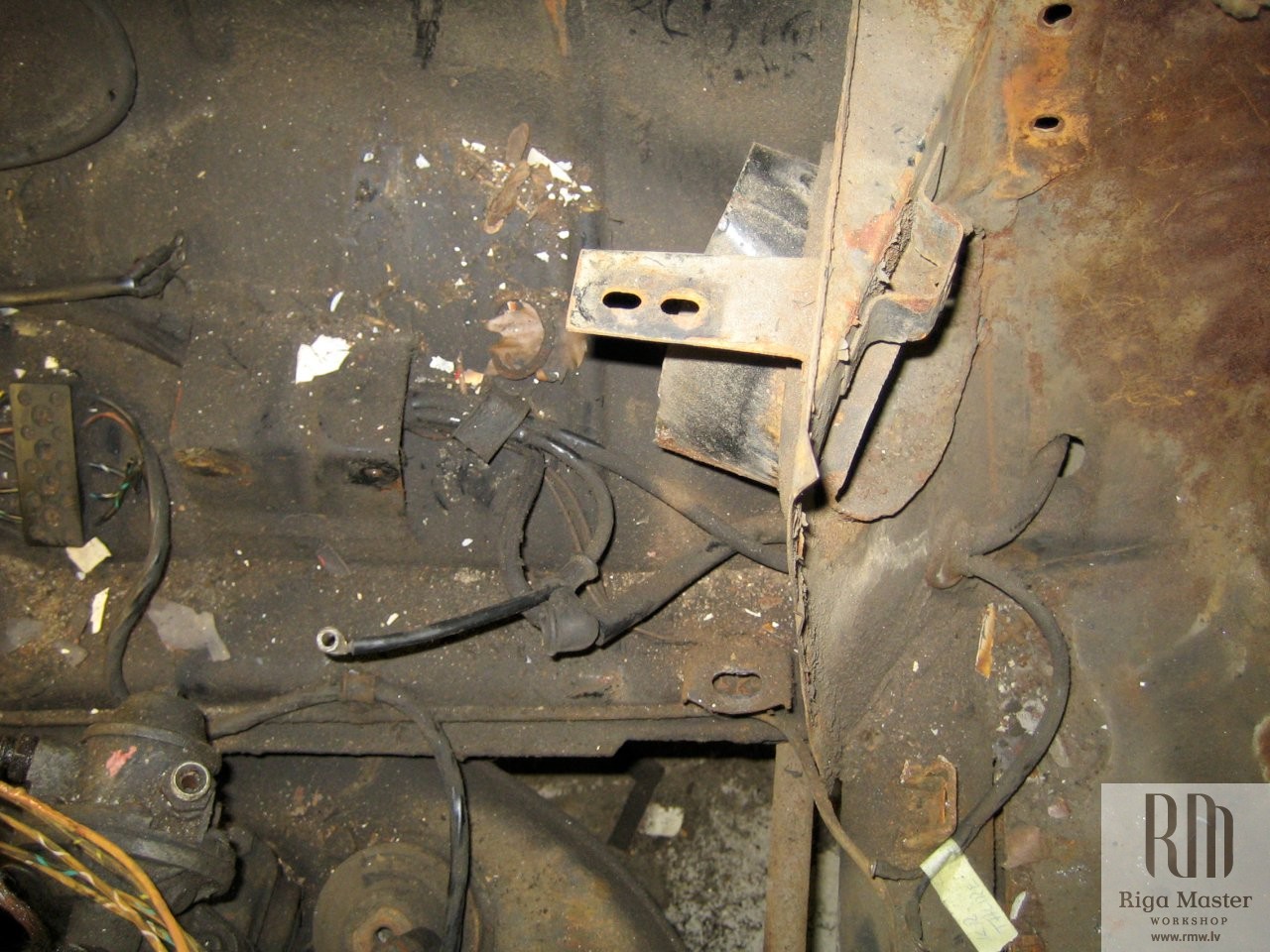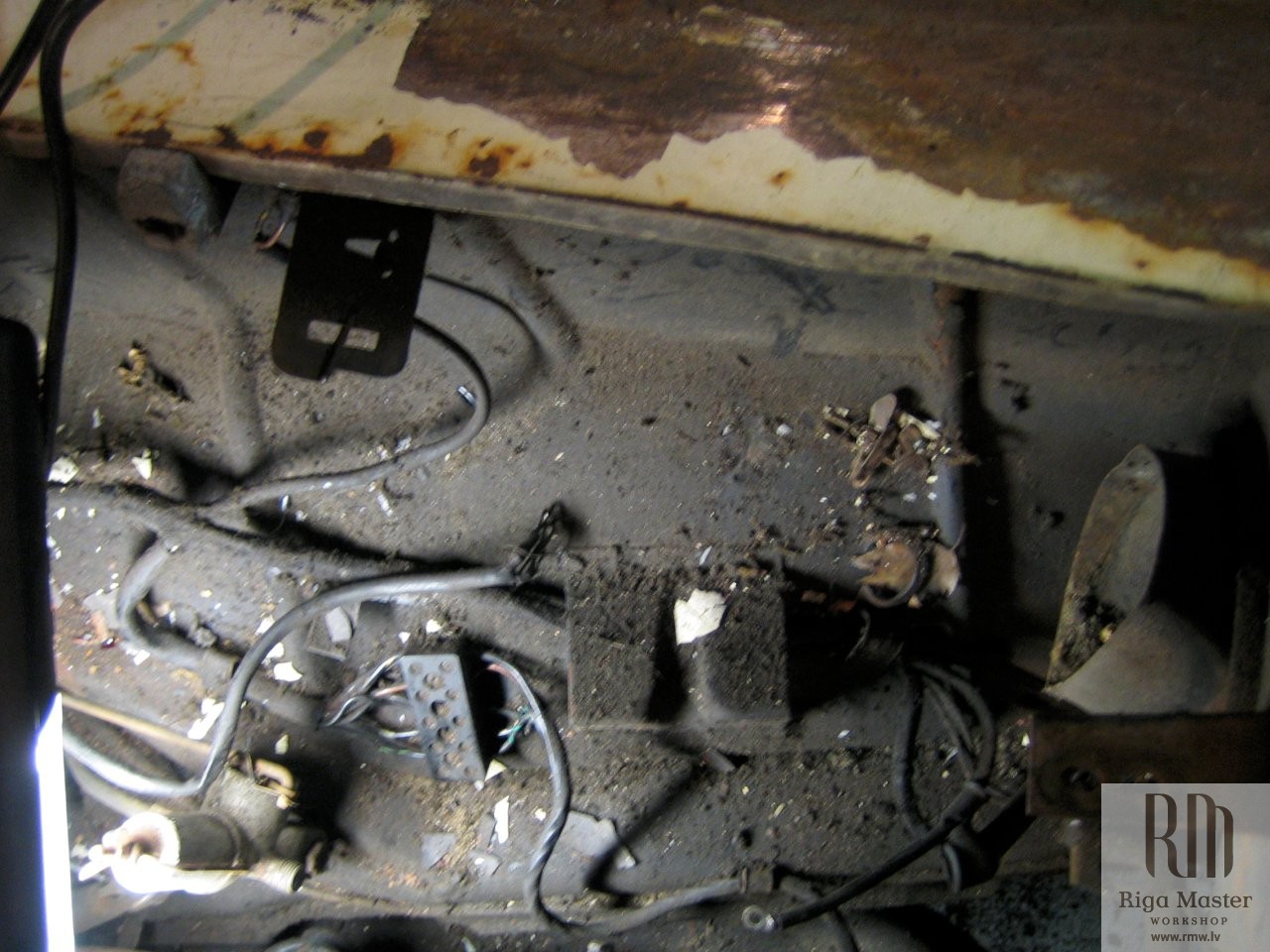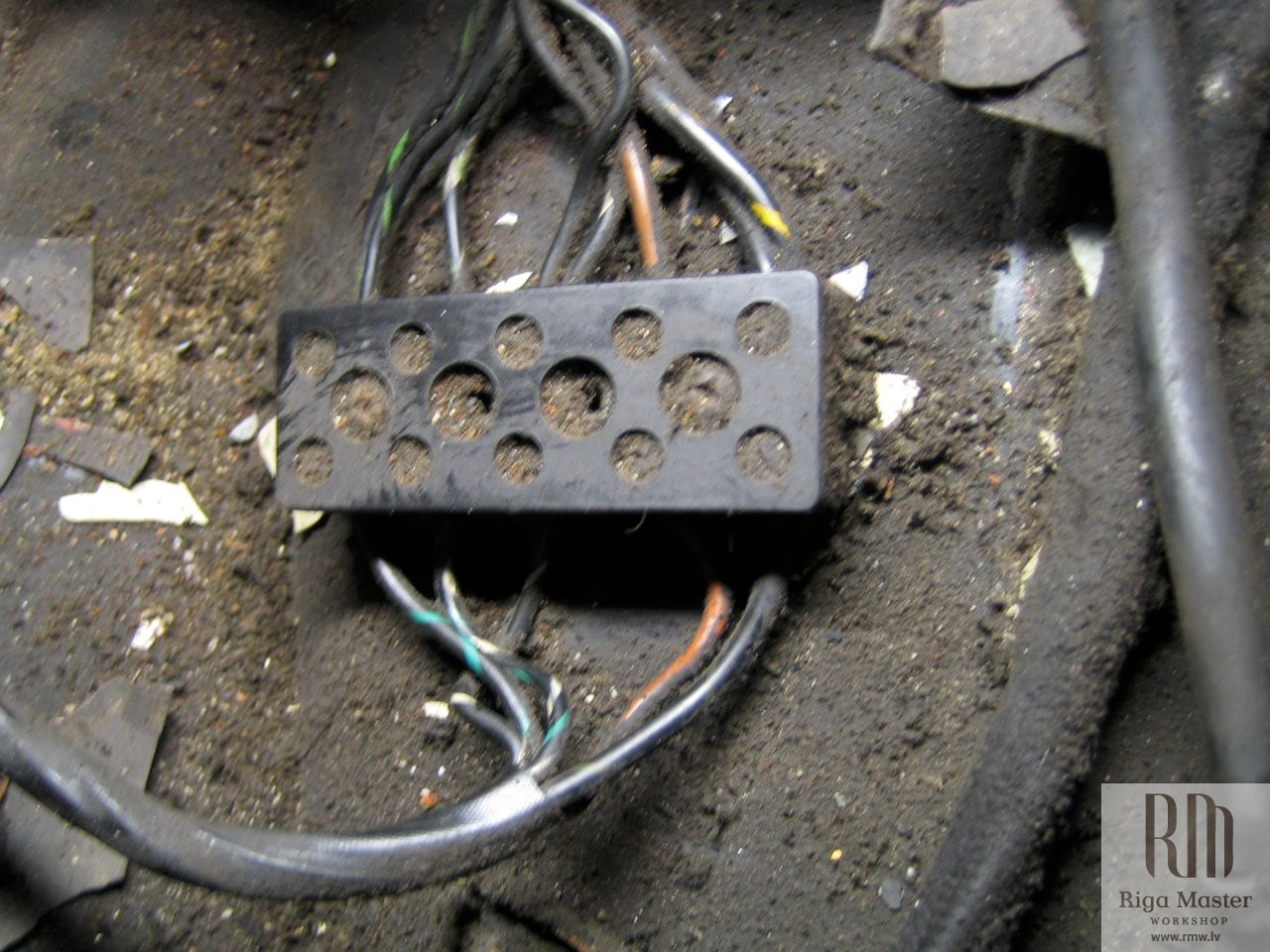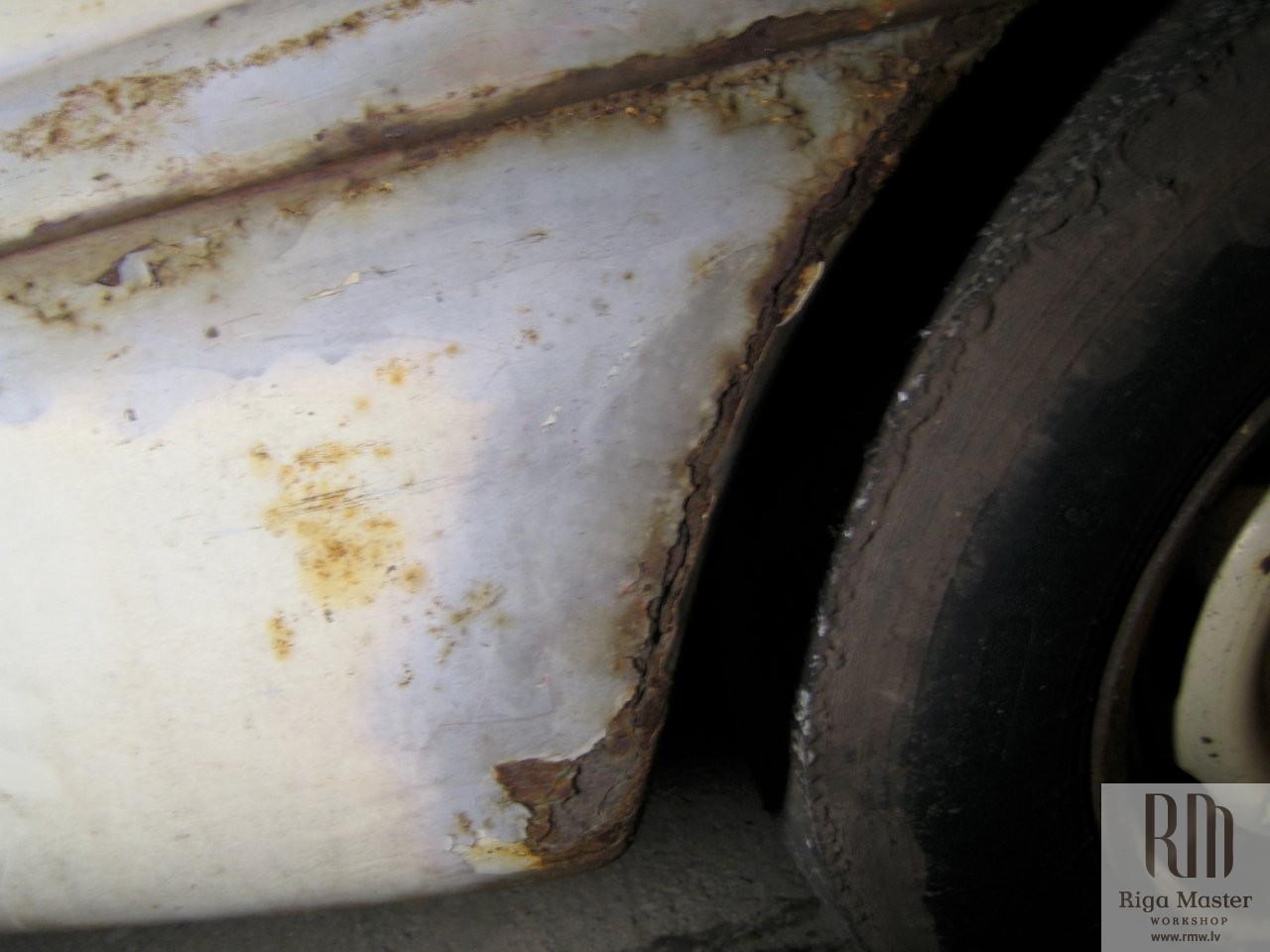Start dismantling. Detailed defect detection
Purchase and assessment of initial condition
Start dismantling. Detailed defect detection
Dismantling the running gear
Transportation of the body to the surface treatment
List of ordered parts
Assembley process
Course of restoration
Purchase and assessment of initial condition
Start of dismantling. Detailed determination of defects
Dismantling the running gear
Transportation of the body to the surface treatment
List of ordered parts
Assembly process

We removed the bumpers and other chrome components. The non-visible side of these components was severely corroded. We began to clear out the engine space and to dismantle the components of the electrical system.

The front lamp frames were also quite significantly corroded.

The upholstery of the storage section of the retractable roof had begun to fall apart. This would have to be completely replaced.
2006.04.17.
The rear lamp frames were also rust-damaged, but could still be restored. However, the electrical installation wires in this section of the car would have to be replaced, because the original wires were damaged beyond repair.
The lamp sockets and reflectors can be repaired.
The electrical system relays were corroded and no longer worked. These would have to be replaced.
The voltage regulator was also severely corroded, but additional examination would be required before deciding whether it could be repaired or would have to be replaced.
The brake enhancement device would most likely have to be replaced, but we would only know its precise condition after dismantling.
The front lamp wires and their connection clamps would have to be replaced. The left lamp frame was significantly corroded.
However, the right side lamp frame had been damaged by rust even more. It had rusty holes and also showed signs of mechanical damage. Most probably, these were the consequences of a slight accident.
The salon's heating system control cables were corroded, not in working order and would most likely have to be replaced.
The insulation of the connection between the electrical installation wires and the fuse block was damaged.
The components of the windscreen wiper mechanism were also rusty, but these could be renovated.
The windscreen wiper mechanism had already been partly dismantled prior to the dismantling of the car begun by RMW.
Major or minor rust damage was in evidence in every place where lining panels were removed. Including under the salon's front panel on the right hand side.
In dismantling the electrical system, we carefully noted all wire connections and their arrangement. This image shows the arrangement of wires in the light switch.
Two of the wires (with cloth insulation) would have to be replaced in this part of the installation due to the damage to their insulation.
All electrical system switches, wires and their connections are similarly checked
Wire connection in the dimension lamp switch.
As before, in the initial determination of the car's defects, we predicted that the generator voltage regulator could be repaired and that only the wires would have to be replaced.
The wire connection of the salon ventilator switch.
The windscreen wiper switch is in comparatively better condition than the electrical system as a whole.
Prior to dismantling, we also accurately documented the placement of the signal lamps and wire connections from the salon's front panel and measuring instrument section.
Signal lamp connections.
The ignition switch wires will have to be replaced, because the insulation is damaged.
The corroded frame of the fuel level signal will have to be replaced.
Just like the underside of the car, the brake tubes in the engine cavity are also damaged along with the brake cylinder itself.
The rear wheel arcs are rusted through on both sides of the body.
Severe rust damage has not only affected the body wheel arcs, but also the rim section around the jack support places.
Rust has also damaged the internal components of the measuring apparatus panel.
The decorative chrome components have been affected by corrosion throughout including in the salon.
The majority of decorative chrome elements will have to be replaced.
This once beautiful car has been severely scarred by the legacy of time and the disposition of its previous owners. RMW's task is to restore this Mercedes cabriolet to its former glory.
The sound signal device is rusty, but can still be restored. This photo clearly shows the corrosion affecting the front part of the body.
The front wall of the salon is no longer lined by sound and heat insulation material.
The majority of windscreen wiper components had already been removed from the car. We received them in varying condition tipped into a box.
Before cleaning the surface, a new cover of insulation material will have to be affixed here.
The front right turn signal lamp is damaged, but can be repaired even though the wires will have to be replaced.
20.04.2006
The right side rim on the rear of the car has been removed and rust is also evident beneath it.
The rear wheel arc on the right side under the chrome decorative cover is completely corroded. This fragment will have to be cut out; a new and exact copy will have to be produced and welded in place of the damaged part.
The electric motor driving the windscreen wiping mechanism is in working order. Minor repairs are required and then it will be restored to its designated place.
Electric installation wire fastening in the boot. The earthing place is most corroded.
Electric installation, connection with the fuel level signal senmder. It shows the legacy of rust, but overall, compared with the rest, its condition is satisfactory.
One on the rare component parts that had not been removed from the engine - the generator. We removed this to submit it for testing and repair.
The starter is neither next to the motor nor among the components received separately. A new starter will have to be ordered.
The right side salon ventilation channel. One of the rare places where the body was almost untouched by rust.
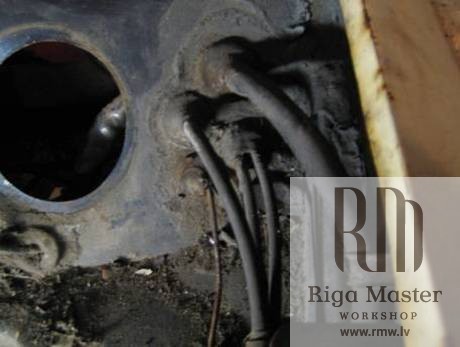
The left side air input vent is also in relatively good condition, but the adjoining holes in the pipes and cables indicate the presence of rust.
The turn signals and distance light relays are beyond repair.
The front left side dimension lamp is too rusty to be renovated. A new one will have to be found.
The left side of the engine compartment after the dismantling of the main components. Rust and dirt everywhere.
It's a similar story in other areas of the engine cavity.
The turn signal lamp wire connection clamps are in satisfactory condition, because they've once been 'conserved' with oil.
Yet another corroded wheel arc fragment. This time on the right side rear.
27.04.2006
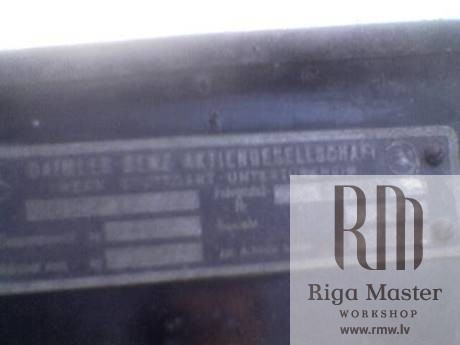
The original manufacturer's plate is still intact with body and aggregate numbers.
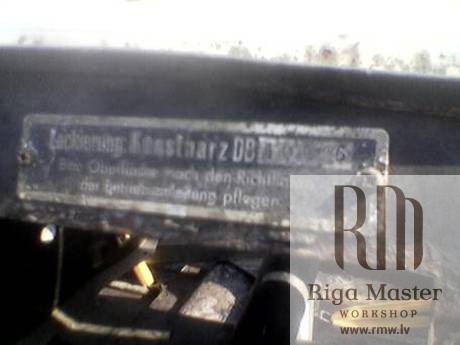
The body colour code plate is also in place.

Dismantling of the electrical system is complete, along with the dismantling of the salon and partial emptying of the engine cavity.
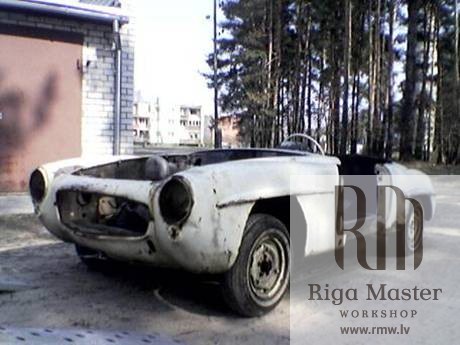
The car is transported for dismantling of its running gear so that the body can subsequently cleaned from dirt, paint residue and rust.
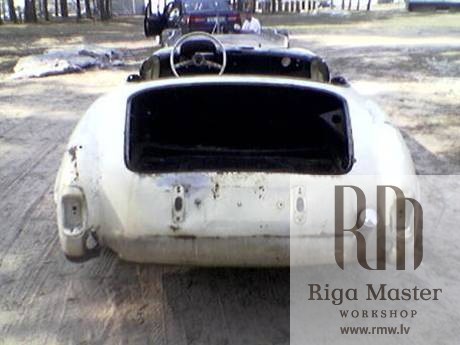
The retractable roof structure and boot hood have also been removed.
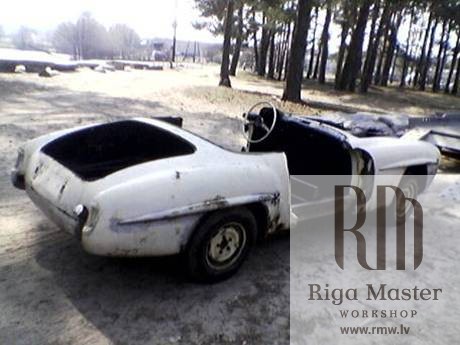
Both doors have also been removed.

Only the engine itself is left in the engine cavity, because it has to be documented at the same time as the front axle and gearbox.



















